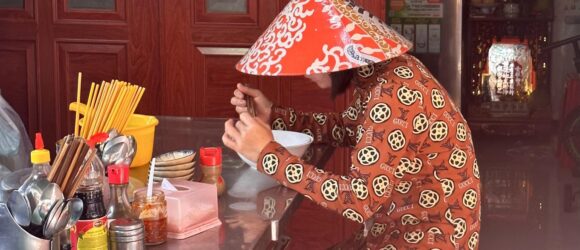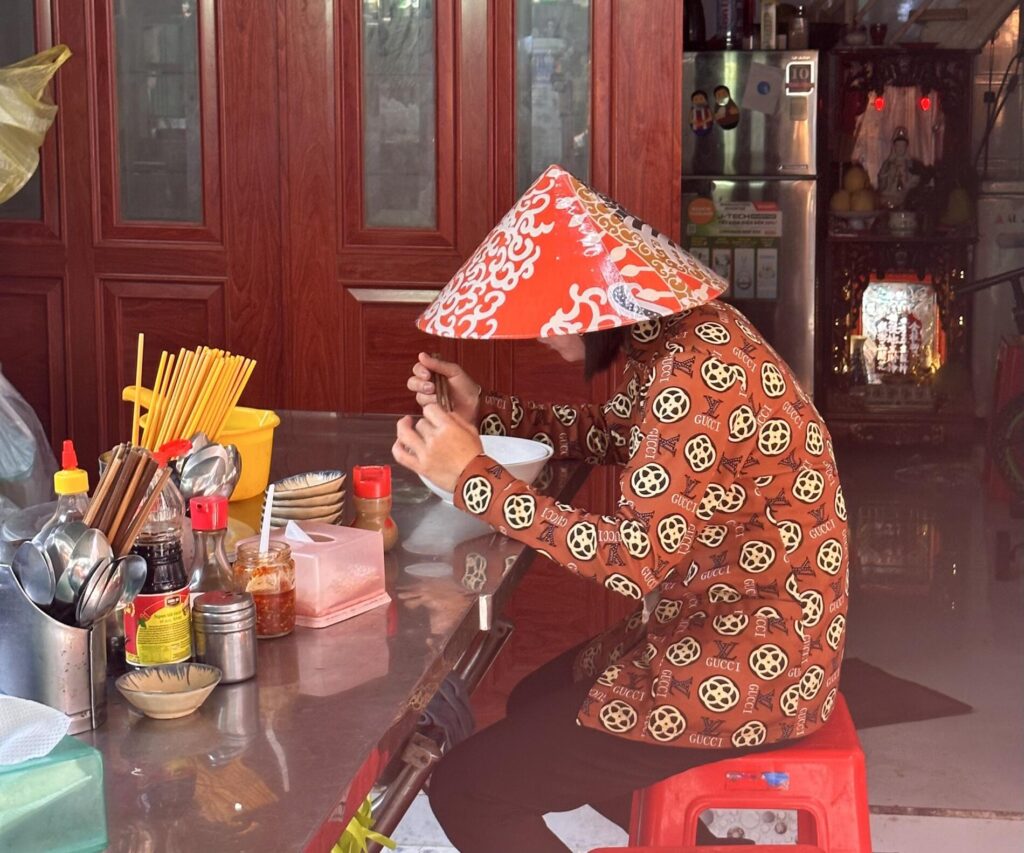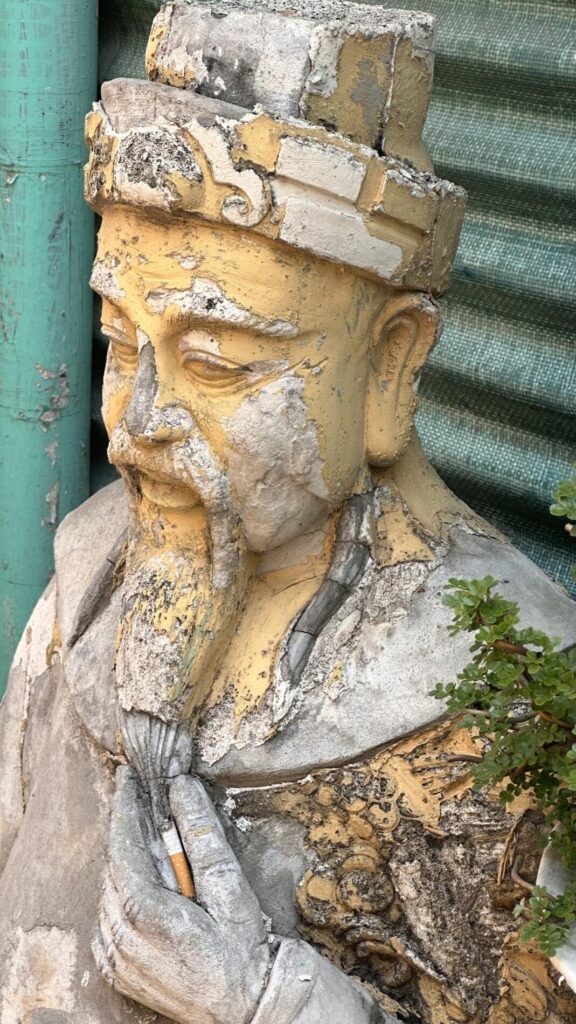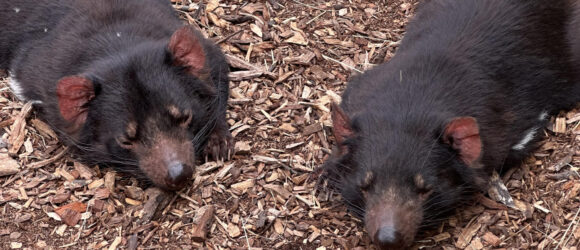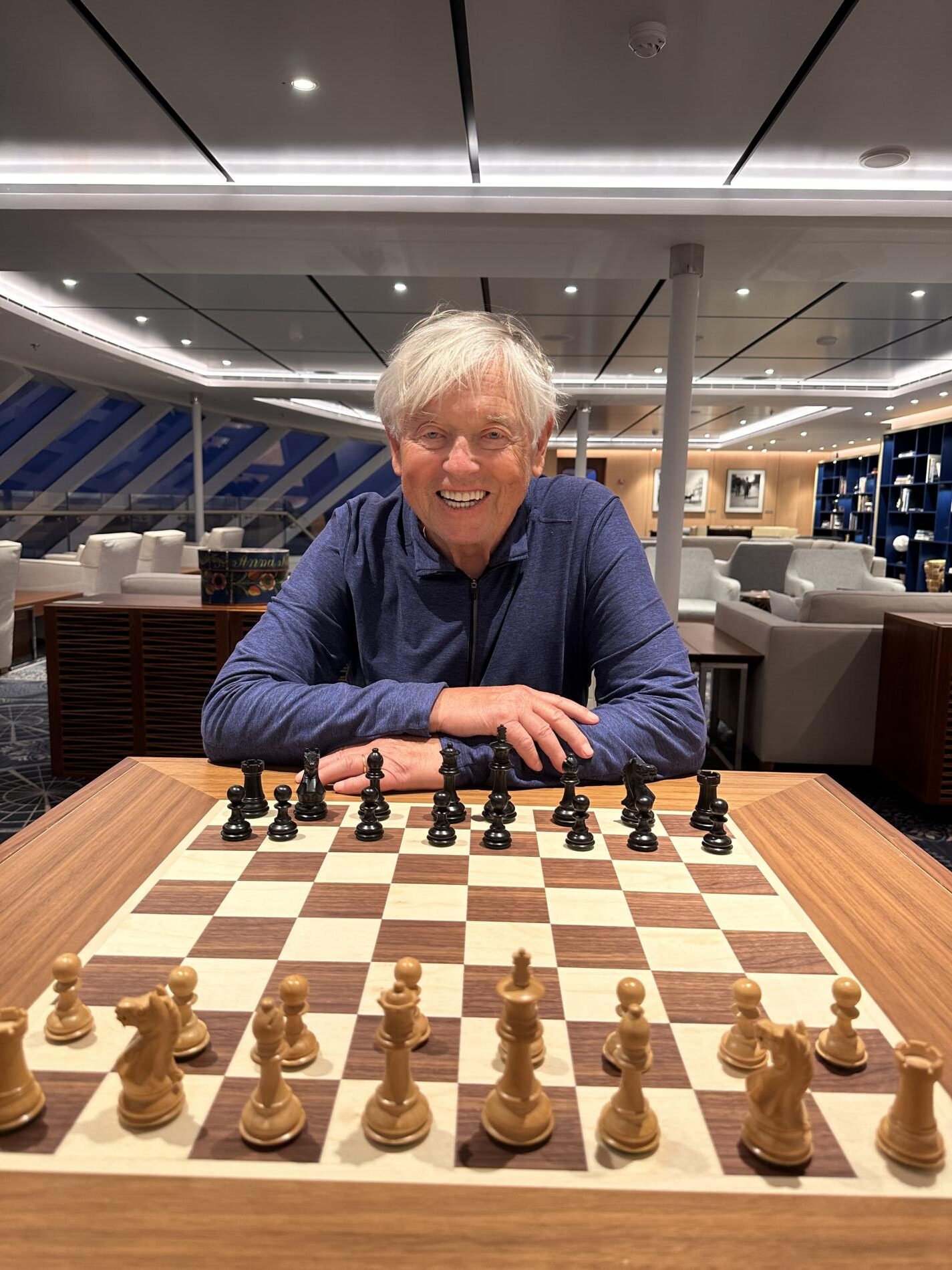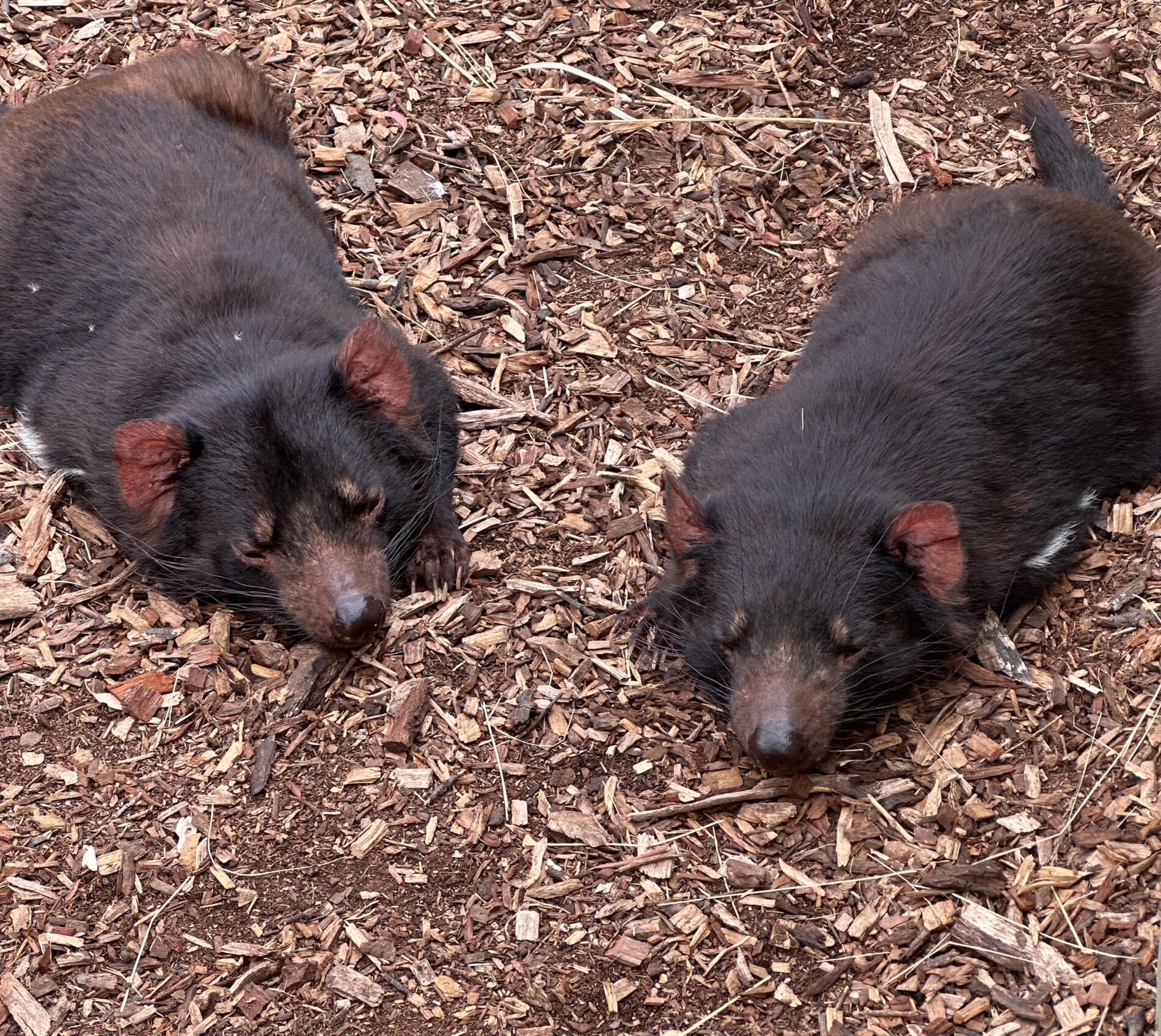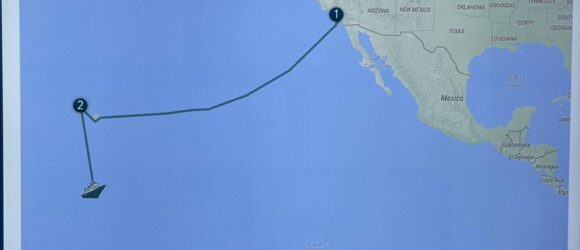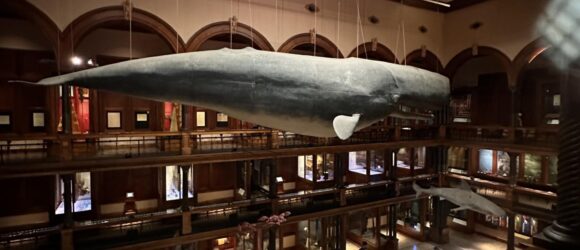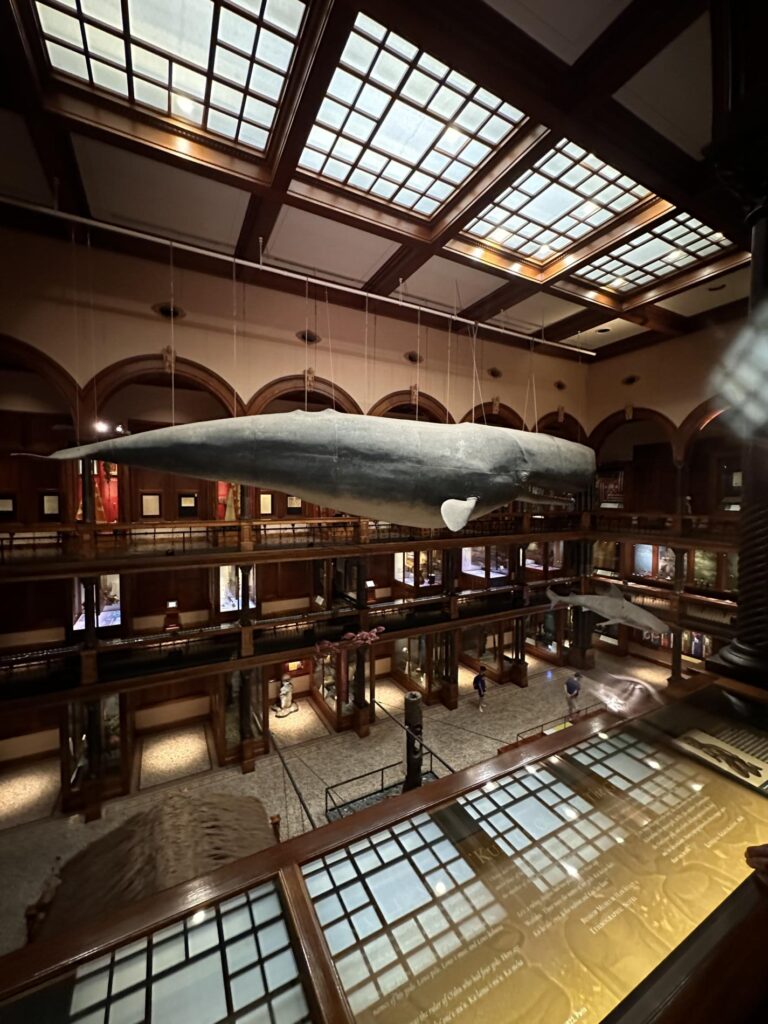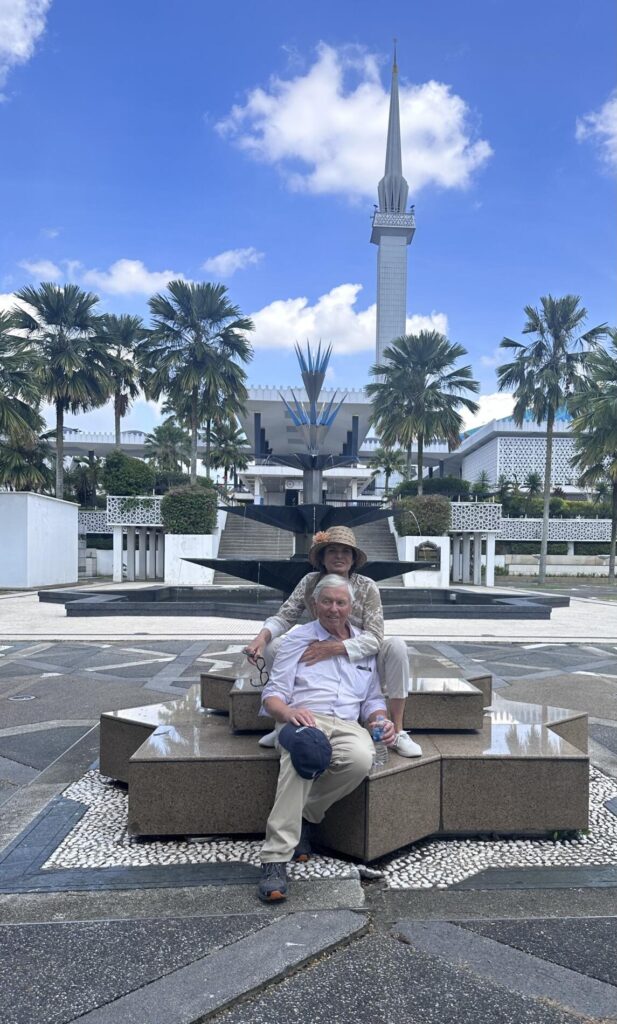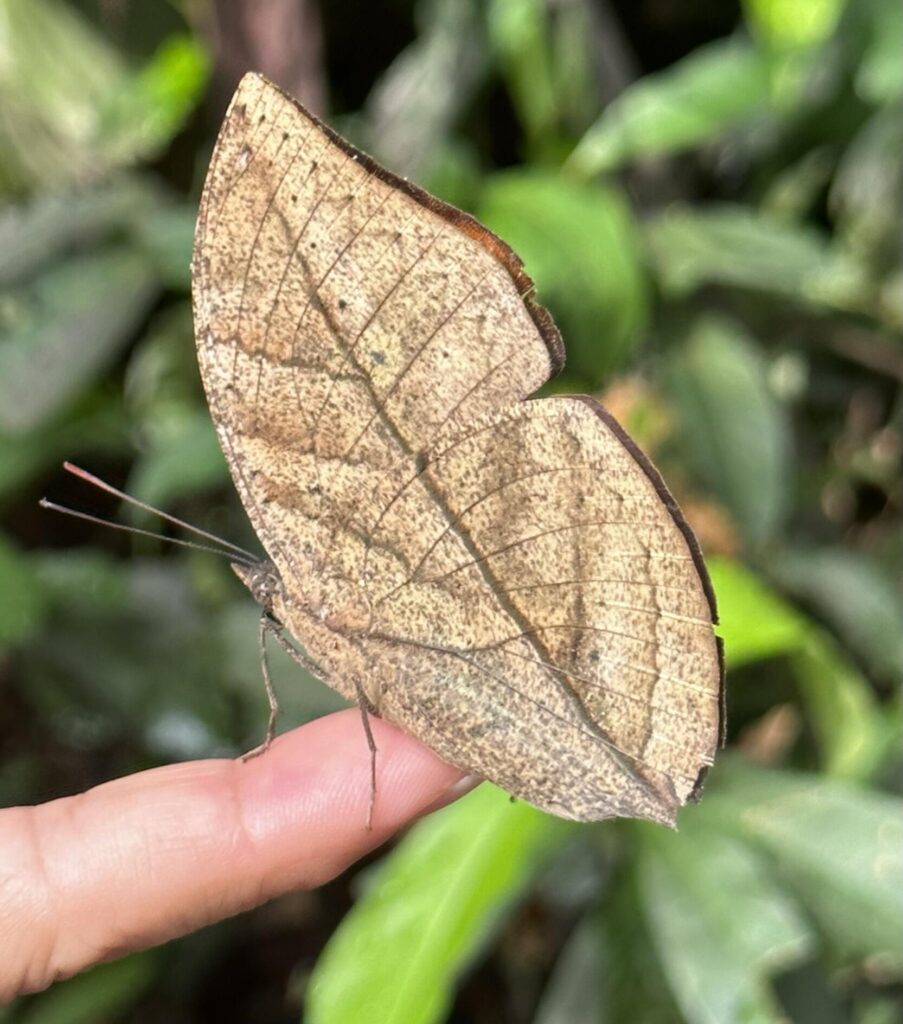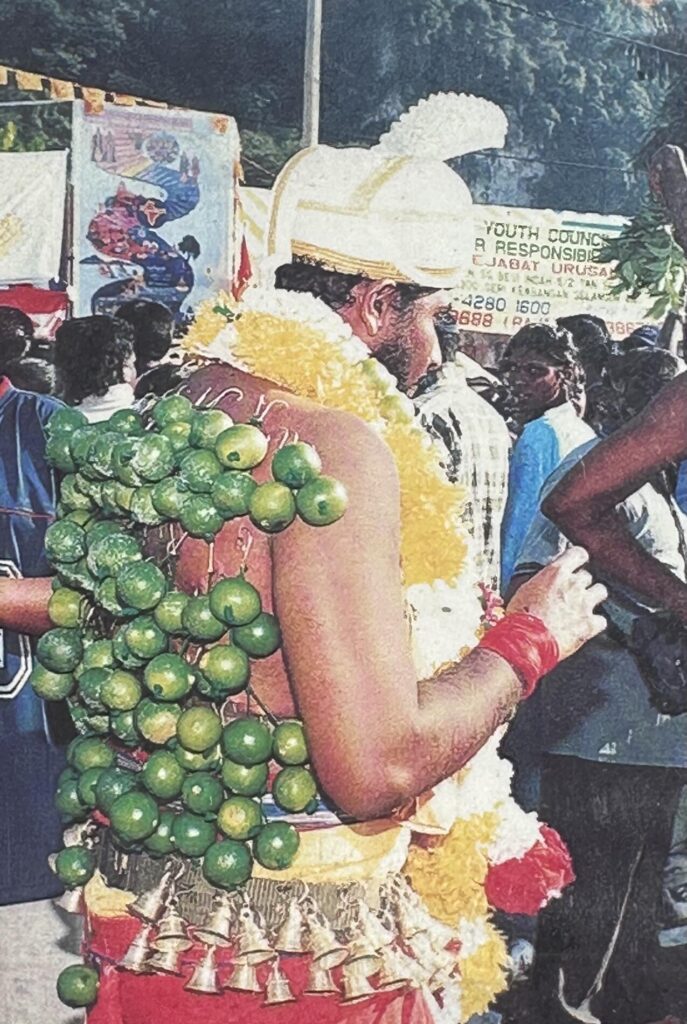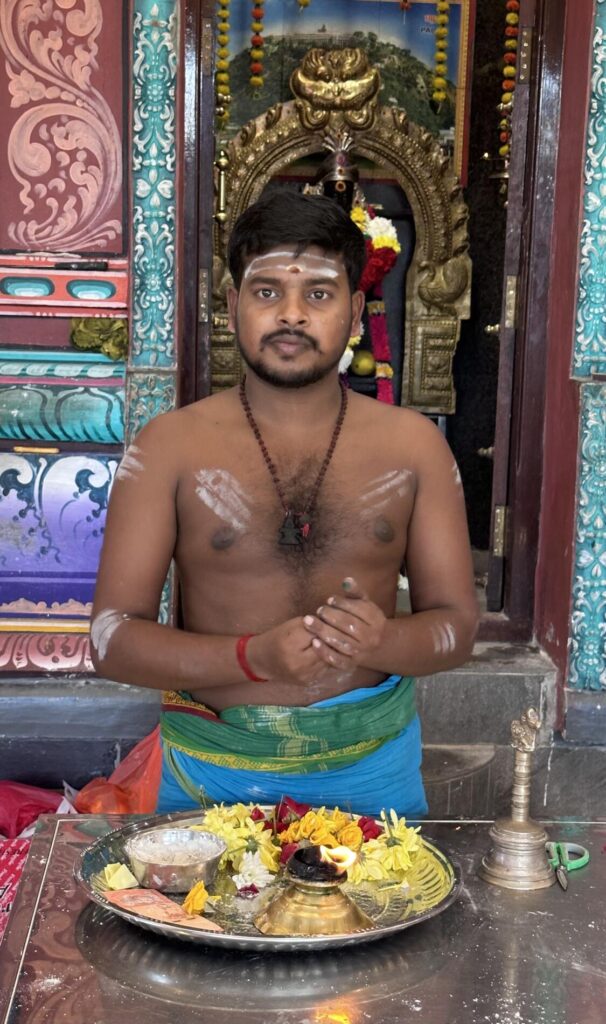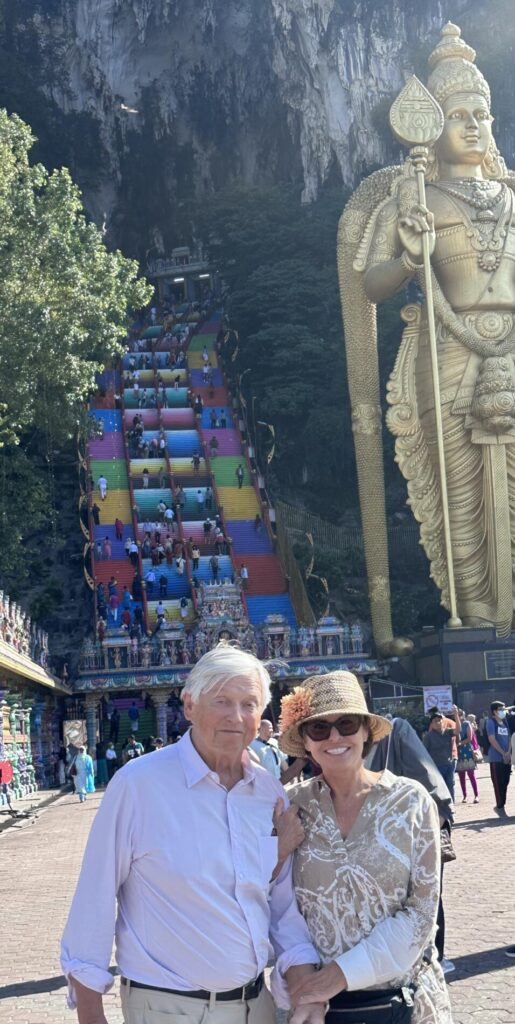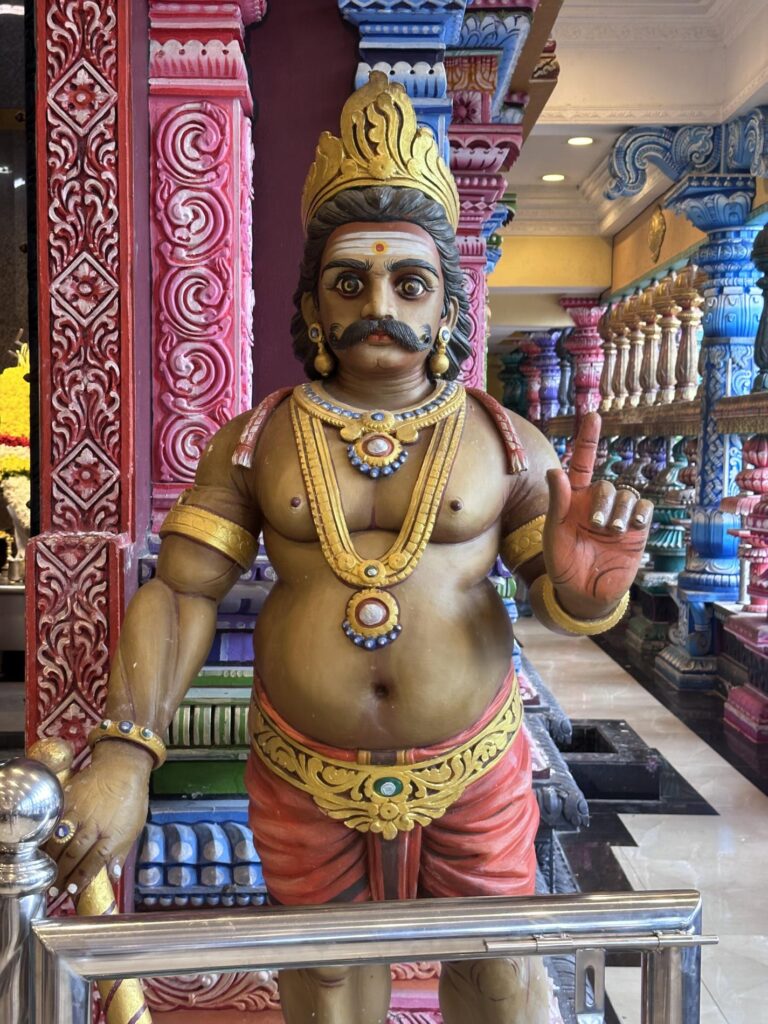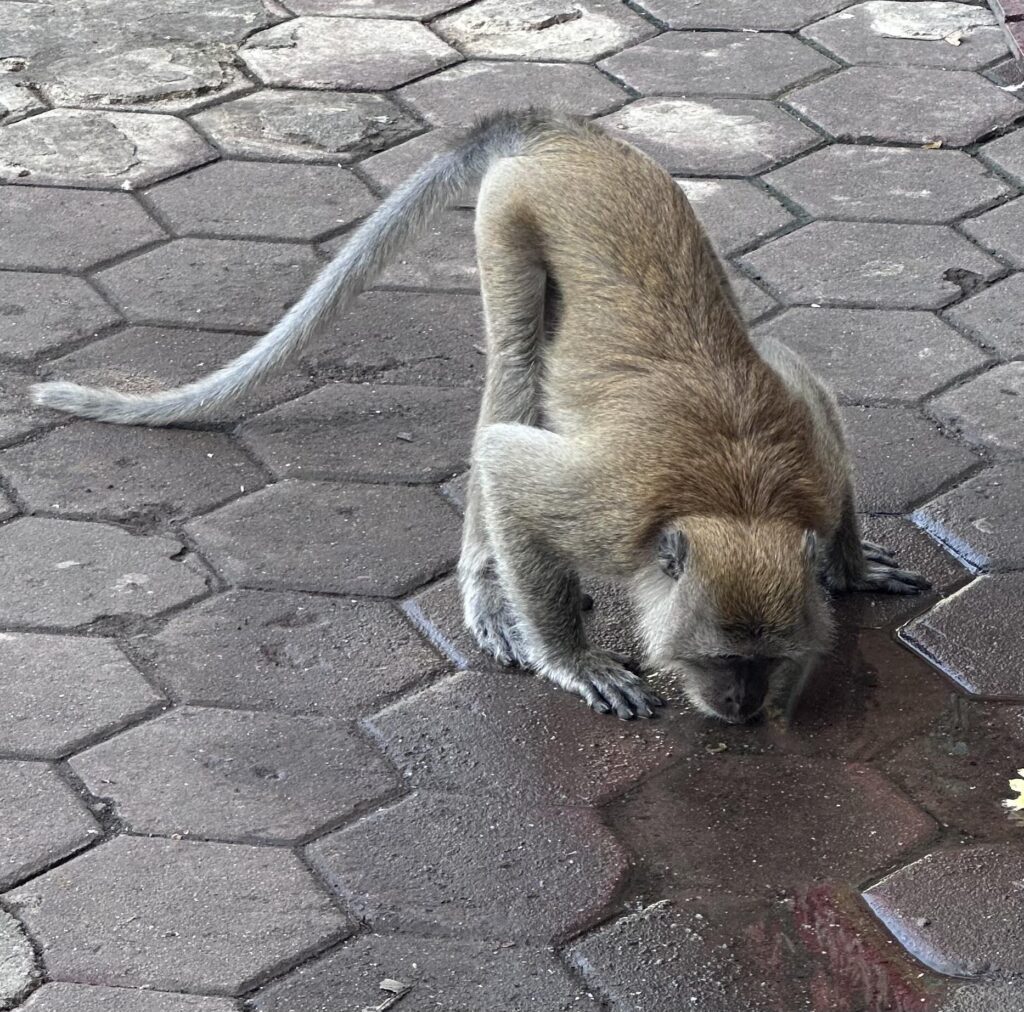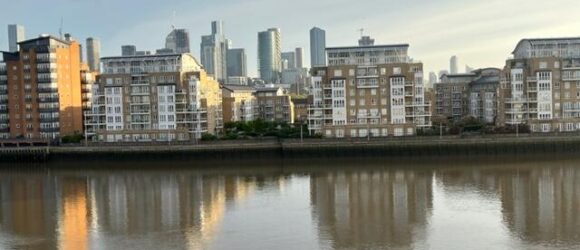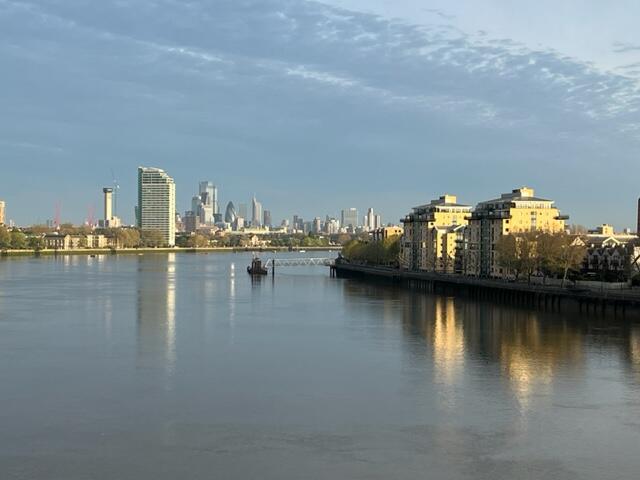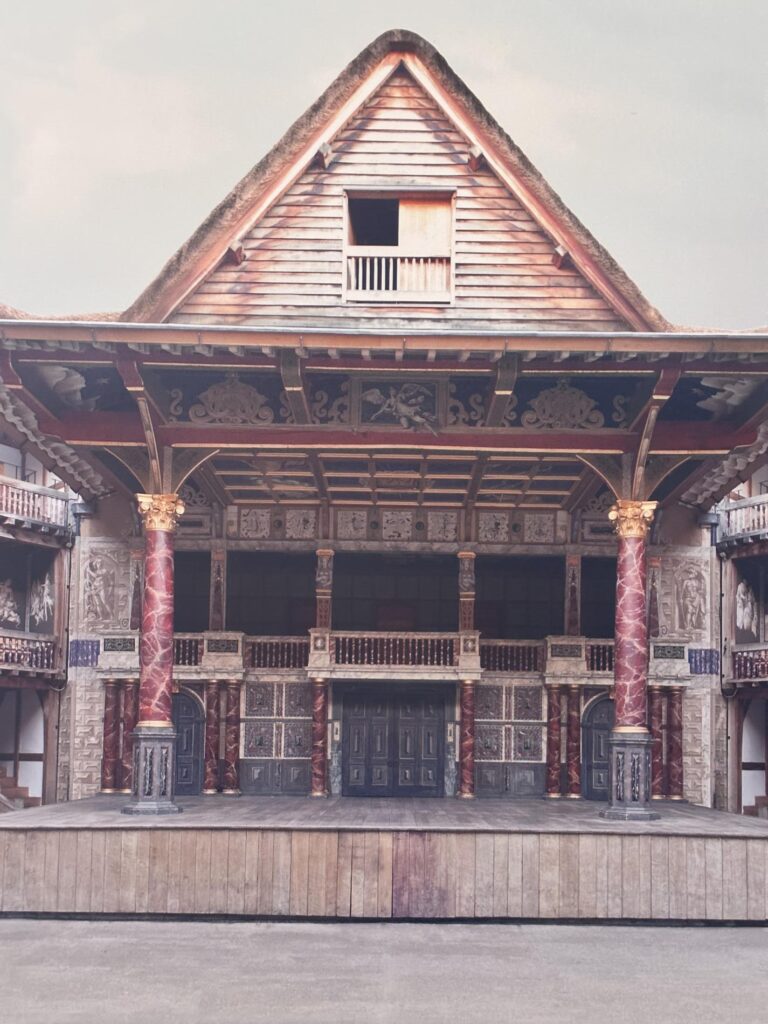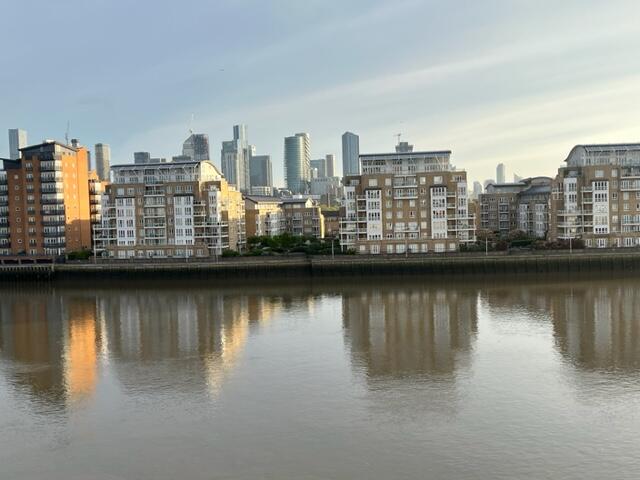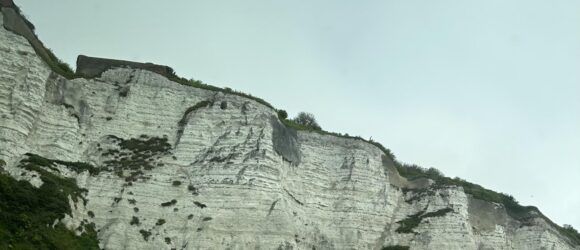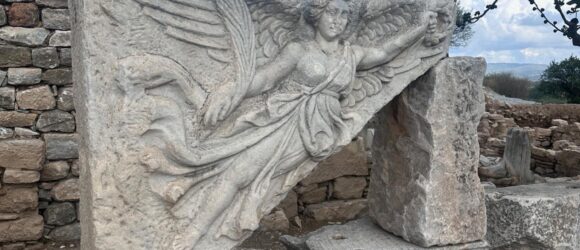Shipboard Life
- At December 31, 2023
- By Jessica
- In Travel
 0
0
My favorite cousin, Danielle, texted me that she is getting to know me better from these posts. Uh-oh.
Those of you who know us well know that we take a cruise every five years to celebrate a milestone anniversary. We have a ceremony to renew our vows, conducted by the ship's captain. The Viking World Cruise is in honor or our fortieth. For our hundredth anniversary we are planning an Under- World Cruise
This Viking cruise is definitely different from the others. In the past, our ship was a floating hotel that we left at every port. We just came back to eat (sometimes) and sleep. This one is more like a private yacht. It's about the on-board activities even more than the ports. Maybe that will change as we go along but today, for instance, we decided to skip Thursday Island and luxuriate on board. It is very hot and humid, raining, and the tender ride is 45 min each way. Also, my bridge buddies said there is absolutely nothing on Thursday Island, not even Friday.
It feels almost cyclonesque. The sky is black and the wind is whistling. The captain just announce that as soon as everyone is back on board, he's pulling up anchor and getting out of Dodge.
Other than that, this trip is just divine. Everything we love to do at our disposal. Great food, great wine (very impressed they are serving Los Vascos - one of our favs), fabulous spa and gym. Very interesting lectures at least three times per day, the source of most of those Fun Facts we send from time to time. And, amazing musical entertainment.
There are not enough hours in the day to partake in all the offerings. We are keenly aware of time passing and want to enjoy while we still can. But Eberhard definitely had time to partake in the Bratwurst. And enjoyed every bite!

And, Jessica indulges daily in ice-cream. All home made. Flavors change with each meal.

Speaking of cold things, we understand there's a morgue on board Hoping that's not where they store the ice-cream.
Saigon (Ho Chi Min City), Vietnam
- At December 24, 2023
- By Jessica
- In Travel
 0
0
Last night we had dinner at an outstanding Vietnamese restaurant followed by a traditional show at the Golden Dragon Water Puppet Theater. The performance, mua roi nuoc, dates back to the 10th century when, after a harvest, the ponds and rice paddies served as stages for impromptu shows. Backed by a Vietnamese orchestra, singers tell the story being acted out by the puppets, which are controlled by a series of long wooden rods and strings. Often the plays have a rural theme relating to Vietnamese folklore and spiritual beliefs.
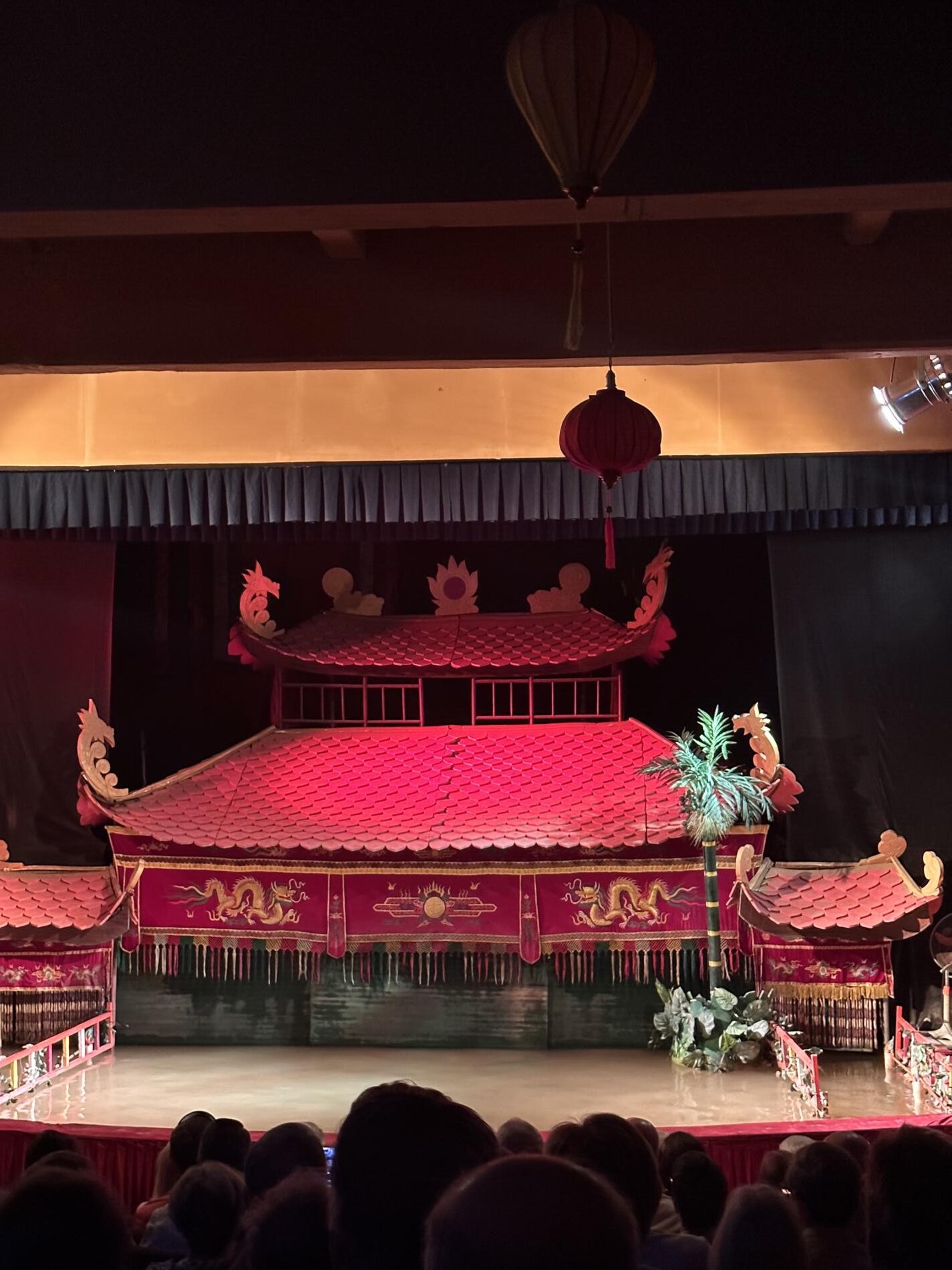
We have been getting some contradictory information from different guides. Yesterday, we heard that individuals cannot own land in Vietnam. According to Google: Private ownership of land is not permitted in Vietnam and the people hold all ownership rights with the State as the administrator. However, the laws of Vietnam allow ownership of a right to use land. This right is called the Land Use Right (“LUR”).
Vietnam, Day 3
In 1978, as Vietnam was trying to recover from the "American War," Cambodian Khmer Rouge, supported by China, attacked Vietnam. In 1979 China directly attacked Vietnam in the North. When Nixon and Kissinger opened up relations with China, communist Vietnam didn't trust China anymore and further allied with Russia. After Mao died in 1976, Deng wanted to teach the Vietnamese a lesson and teamed up with Cambodia to invade Vietnam. China considers Vietnam, Hong Kong, and Taiwan to be its satellites. The Vietnamese pushed back both invading forces using American super weapons left behind. The Vietnamese occupied Cambodia until 1995. Today, half the Cambodian population is Vietnamese.
Last year the Vietnamese changed the color of the passport from green to blue as a symbol or message that the government is moving closer toward democracy. There is dissent within the communist party, according to our guide.
We visited Chinatown. More than 1 million Chinese live in Vietnam. Our guide said that there is a civil war brewing in China between the Cantonese speaking southerners and the Mandarin speaking northerners. Has anyone else heard about this?
Wool and More
- At December 10, 2023
- By Jessica
- In Travel
 0
0
It's a good thing we love the shipboard life. They just cancelled the 3rd port (out of the first 5) due to weather. It's beautiful out here in the middle of the ocean though.
Just finished lunch and another pear cider. Feeling no pain. Did very well at today's Daily Trivia. Getting really for another round of duplicate bridge. After the pear cider I'm seeing double, not duplicate.
We attended a fabulous lecture this morning on....are you ready....wool!
We learned about the history of the wool trade starting from the Middle Ages.
A few fun facts:
- The Vikings made their sails from wool. One 2,000 sf sail took the wool of 1000 sheep.
- There were 13 steps from shearing to pressing to make wool cloth. Step #8 is called "Fulling." This step entailed soaking the woven wool in hot, stale, human urine and stomping (like grapes) to tighten the fibers. An I Love Lucy missed opportunity?
- The Hundred Year War between England and France was over wool. And it was actually 116 years. Joan of Arc helped France end and win that war (you go girl!). Two years later, the War of the Roses started in England due to devastation and disorder from the 100 (116) years war.
Most interesting to me is how many common idioms originated in the wool trade. Dyed-in-the-wool (steadfast) comes from wool that is dyed early in the process. Shoddy (poor quality) refers to discarded or reused wool then relegated to peasant clothing. Pop Goes the Weasel come from the sound a drop spindle makes when the weasel comes off. I could go on....
But maybe the most interesting new fact is that the wool industry was considered so important to England that in the 14th century King Edward III decreed that the Lord Speaker of The House of Lords must sit on a sack of wool. This custom is still done to this day!! Ronnie Stewart - please confirm or deny.
Oh! We crossed the International Date Line today. Wonder what the time is in the T shaped cutout and why...
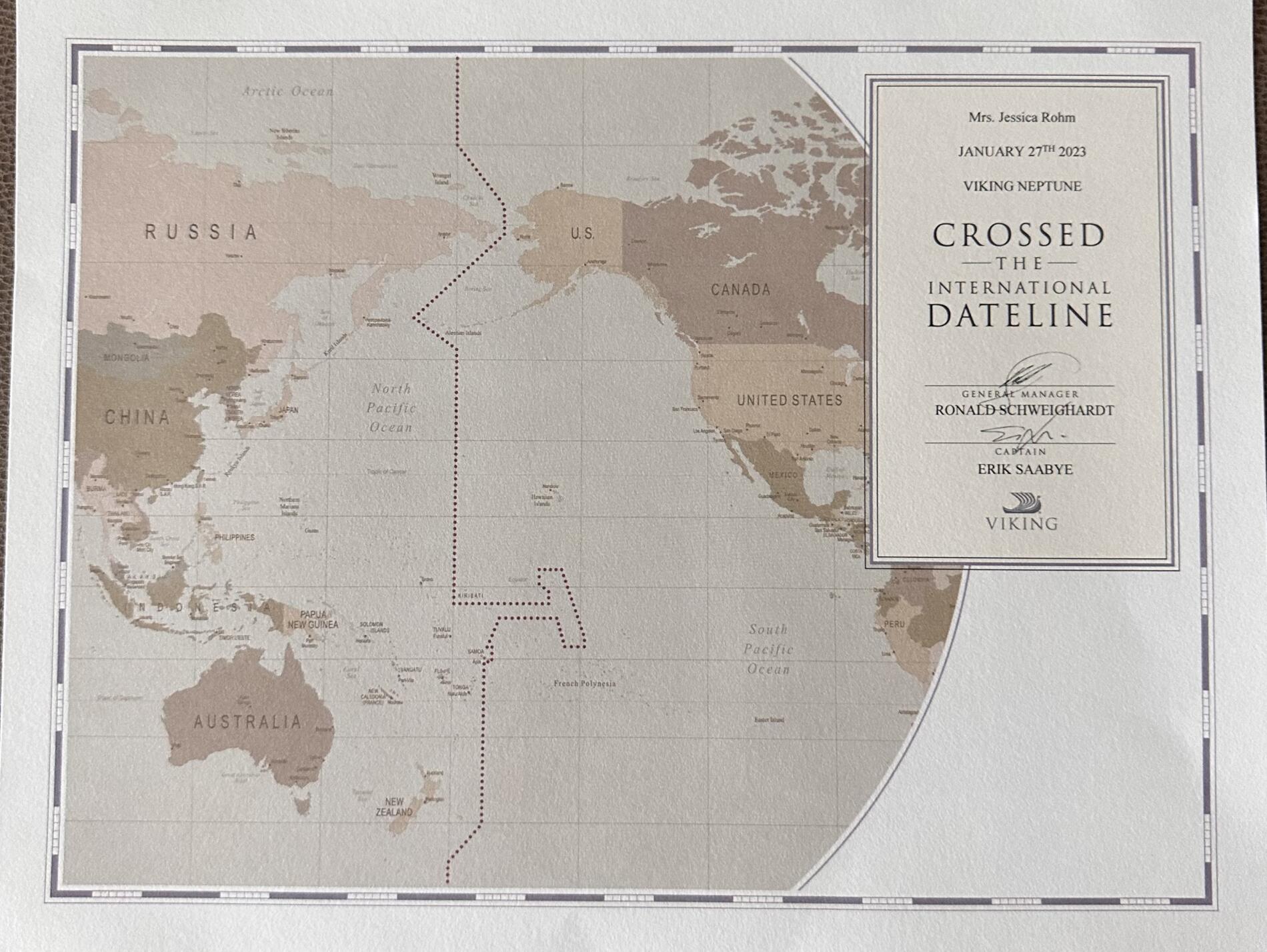
Crossing the Pacific
- At December 03, 2023
- By Jessica
- In Travel
 0
0
Hope all is well with you, especially our fellow Californians. Sending you sunny thoughts and dry humor.
We had a one hour time change last night so got an extra hour of sleep. This is a much more palatable way to deal with time change….slow and steady.
Thanks for all the positive feedback and requests for photos. Not much to photograph yet because we’re somewhere in the middle of the Pacific Ocean. The weather is sunny and mild. Just beautiful.
Did you know the Pacific Ocean is 64 million square miles? It’s twice the size of the Atlantic, a third of Earth’s surface, 46% of the world’s total water surface, and as deep as 35,797 feet deep at the Mariana Trench.
Here’s where we are currently:
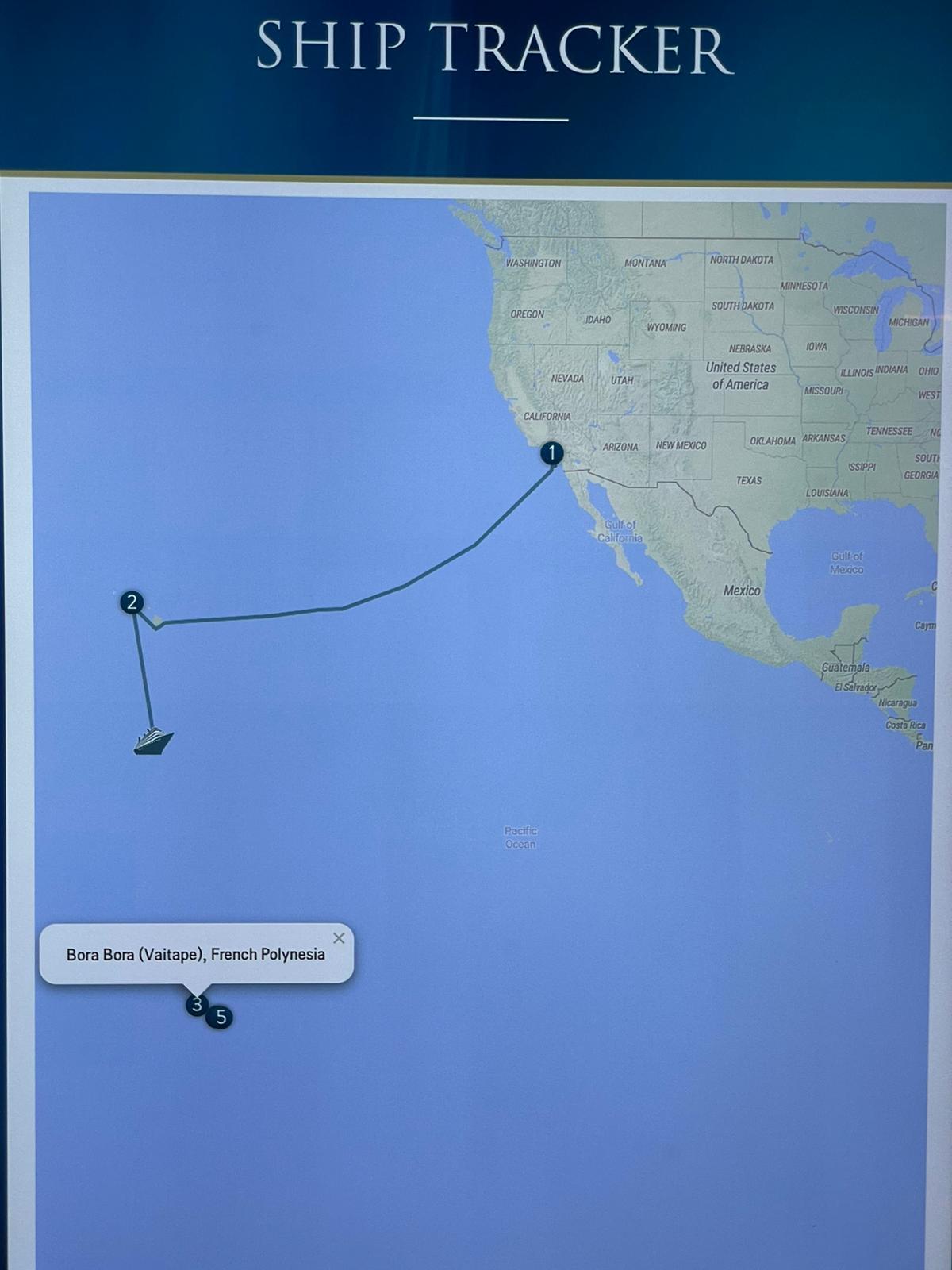
After breakfast and morning yoga, Eberhard went for his bridge lesson and Jessica went for her Wellness Analysis at the Spa. The Age-Less Spa package was a Christmas present from Eberhard. Jessica was hooked up to a dozen or so electrodes. Her hands and feet were stationed on mirror-like panels. The whole get up looked like something between a lie-detector test and Frankenstein’s annual check-up. The pages of computer results were impressive. We’ll spare you the details but her Wellness Score was 93 out of 100. The handsome Swede, Thomas, who analyzed the results said most people score between 60 and 70%. I bet he says that to all the girls and, yes, he got a big tip.
Spa hot tub:
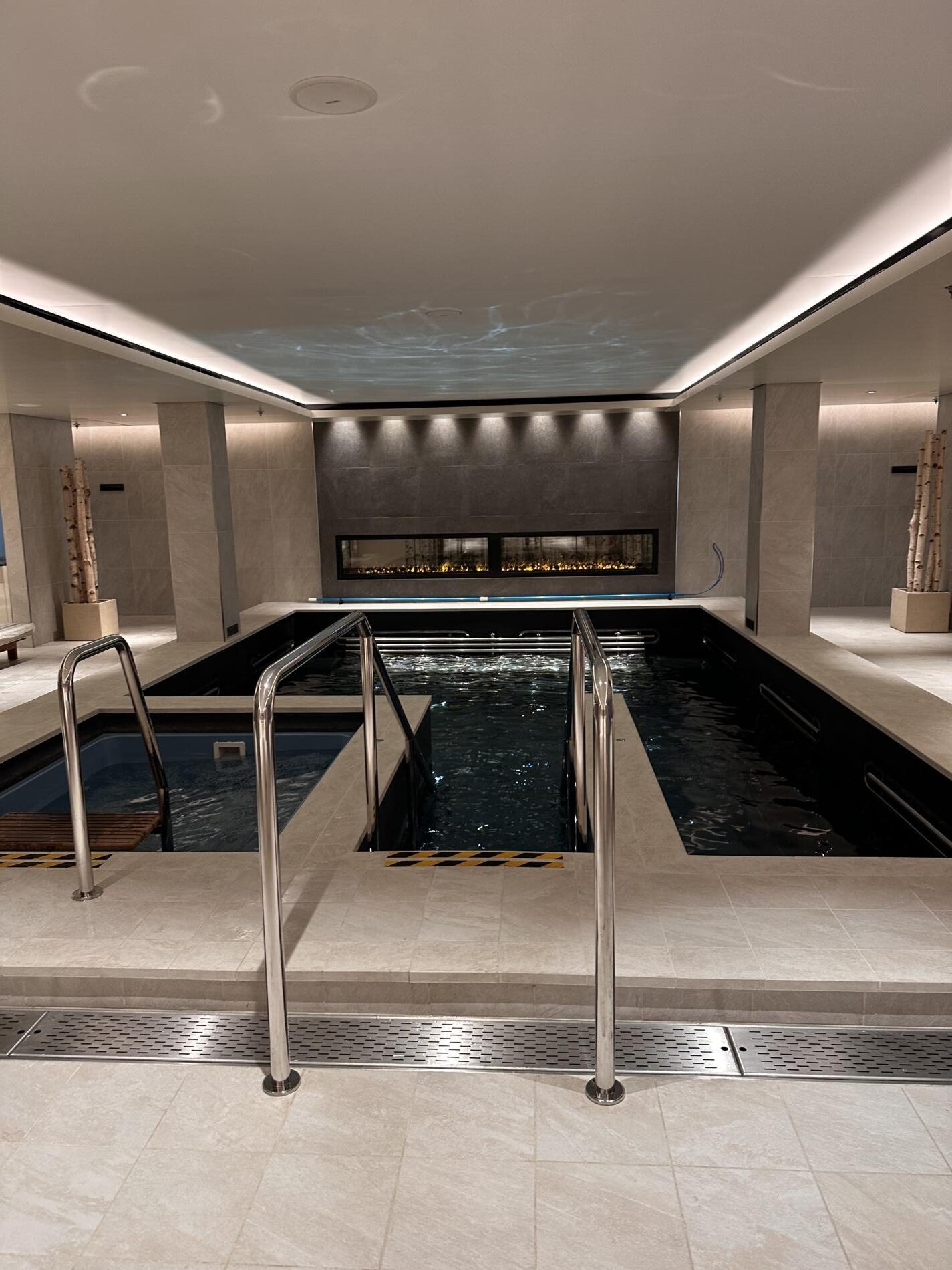
Then we went looking for the shops to buy Jessica an exercise outfit. There were plenty of Scandinavia ski sweaters but no Lululemon.
Jessica and her new found friend/bridge partner Peggy Bossie (that’s really her name although Jessica is much bossier than she is) have now come in second in the duplicate bridge tournament two days in a row.
We had an early dinner of gravlax sandwiches at the bar because we’re going to a 6:30 lecture about human migration patterns. Never a dull moment!
Honolulu, Hawaii
- At November 26, 2023
- By Jessica
- In Travel
 0
0
Aloha Family and Friends,
A special call out and mahalo* to our dear friend who is housesitting while we're gone and got more than she bargained for. Apparently, the house is leaking like a sieve. Where is Al Hammond when you need him?
Many of our fellow passengers are getting cabin fever after a week at sea. One said he felt like Noah (forty days and forty nights). Not us! Love the floating life. If we were rich enough we'd be tempted to buy a yacht. But then we'd be worried about the price of gasoline, the cabin steward or, worse, the chef quitting. There's something nice about those being someone else's problems.
Today we went sightseeing in Honolulu. We've been here several times before. But we had never been to the Bishop Museum so we went there.
"Bishop Museum was founded in 1889 by Charles Reed Bishop in honor of his late wife, Princess Bernice Pauahi Bishop, the last descendant of the royal Kamehameha family. The Museum was established to house the extensive collection of Hawaiian artifacts and royal family heirlooms of the Princess, and has expanded to include millions of artifacts, documents and photographs about Hawai'i and other Pacific island cultures. Today, Bishop Museum is the largest museum in the state and the premier natural and cultural history institution in the Pacific."
And, for those of you dying of suspense, we did find a Lululemon.
After a late lunch on the ship, we relaxed a little then went to the gym for an hour followed by a good steam bath and hot tub soak.
We will end today's missive with a Hawaiian poem:
*"Mahalo" is a Hawaiian word meaning thanks, gratitude, admiration, praise, esteem, regards, or respects.
Greenwich, England
- At November 12, 2023
- By Jessica
- In Travel
 0
0
Greenwich, England from the sea
We anchored off Greenwich, England this morning waking up to a beautiful day. Leaving shortly for our last excursion: Shakespeare's Globe Theater.
Alas, after four months the cruise portion of our trip is coming to an end tomorrow. We'd like to counter some misconceptions about this type of cruise.
1. Cruises are Sedentary
Actually, cruises can be quite strenuous. When in port, we are usually out and about for at least 8 hours. We regularly logged 10,000+ steps. On At Sea days there's the gym, walking on the deck, exercise classes, and the pools. In fact, the only negative experiences related to other passengers really not up to the activities who slowed the group or irritated us with their complaining.
2. Cruises don't afford enough time in each port
Viking did a great job of planning the time in each port, usually 1-3 days. Never did we feel our time was cut short.
3. Cruises are cramped and uncomfortable
The pampering and luxury is beyond expectation. The staff is amazing.
4. You gain weight from all the food
Before our Covid quarantine, where we basically sat in bed for five days, we had both lost weight despite all the proffered food.
It really was a once-in-a-lifetime experience.
FUN FACTS:
Distance Travelled (LA to London) 28,341 miles
Cookies consumed 168,000
Eggs consumed 180,000
Filet Mignon consumed 17,000
Wine consumed 10,000 bottles
Toilet tissue used 35,300 rolls
We didn't go to a single evening show, preferring to retire to our room and read. We read 22 books, many taking place in the locations we visited. The lectures were fabulous, especially those by a speaker called Russell Lee, proving a great speaker can make any subject interesting - even wool.
We learned so much about the world, and how everything interconnects, about the senseless wars and aggressions throughout history, and how people everywhere are the same at their core.
Dover, England
- At November 05, 2023
- By Jessica
- In Travel
 0
0
Chalk, the same stuff teachers used to use on blackboards (before there were "smart boards"), is what makes the Dover cliffs white. It seems the smarter the boards get, the dumber the pupils become.
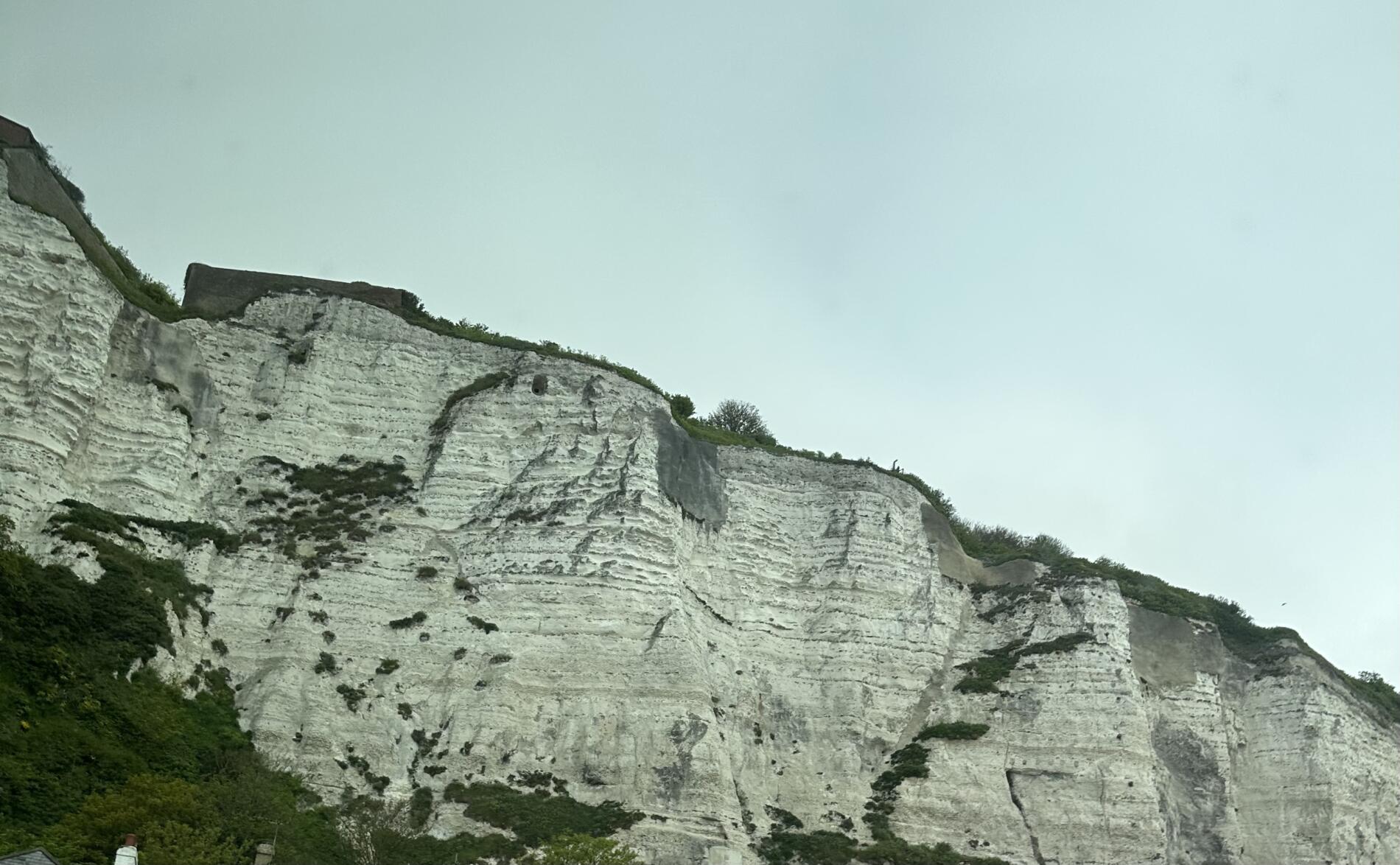
There are still tunnels underneath the cliffs from when Napoleon invaded England.
A visit to nearby Canterbury was such a lovely surprise.
It's like Nantucket but the original. (Think Disneyland vs. Neuschwanstein Castle in Bavaria.) It is famous for The Canterbury Tales and many buildings, pubs, and inns are named for Chaucer's stories.
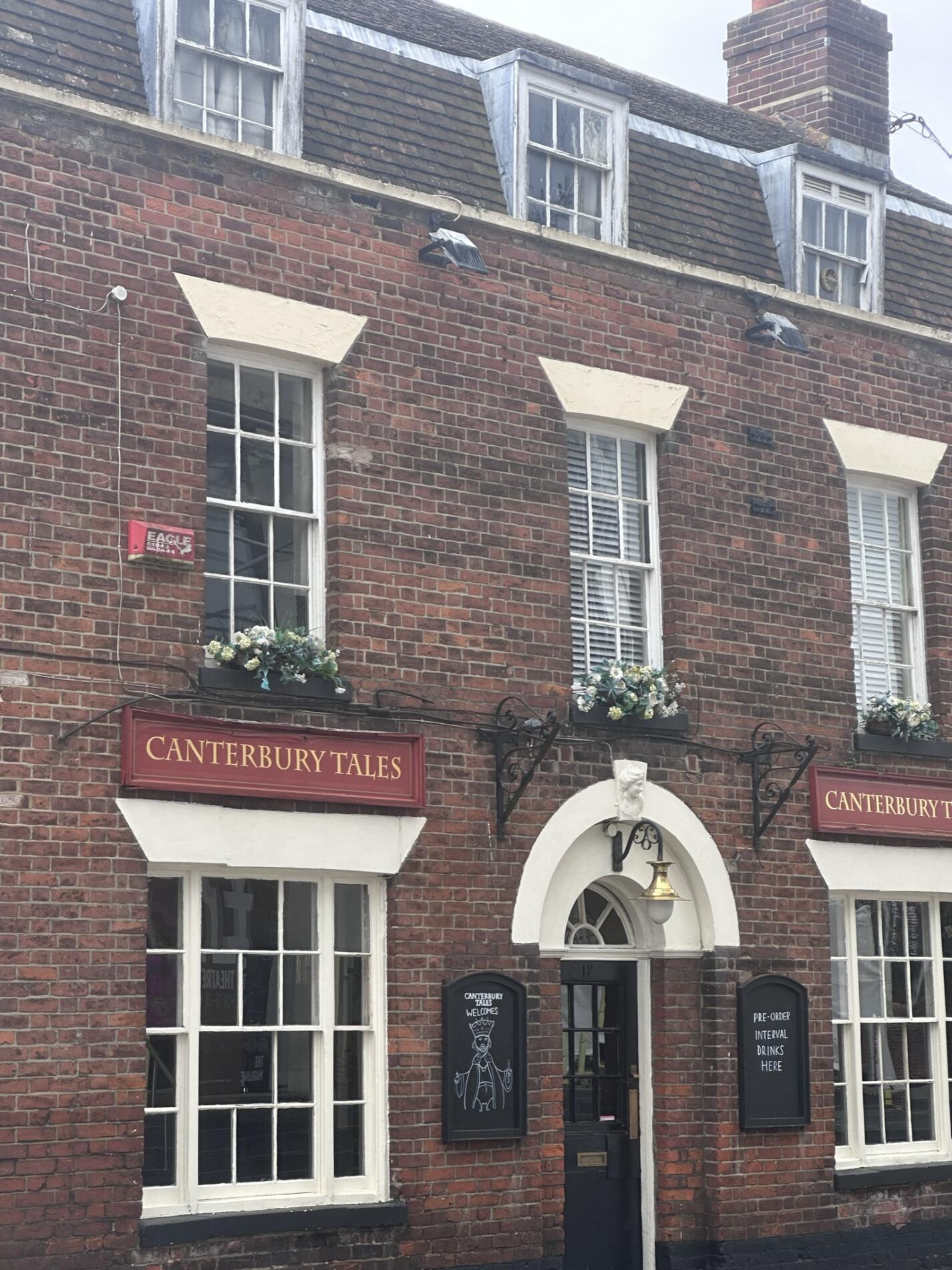
Canterbury was founded by the Romans over 2000 years ago. They built a light house, city wall, and Amphitheater. They pushed North to found the Roman capital of England - Londonium.
The Archbishop Thomas Beckett was murdered in Canterbury cathedral in 1170. Henry II thought he had too much independence. Beckett became a martyr and Canterbury became the
Mecca of England. It still gets over 100,000 pilgrims per year.
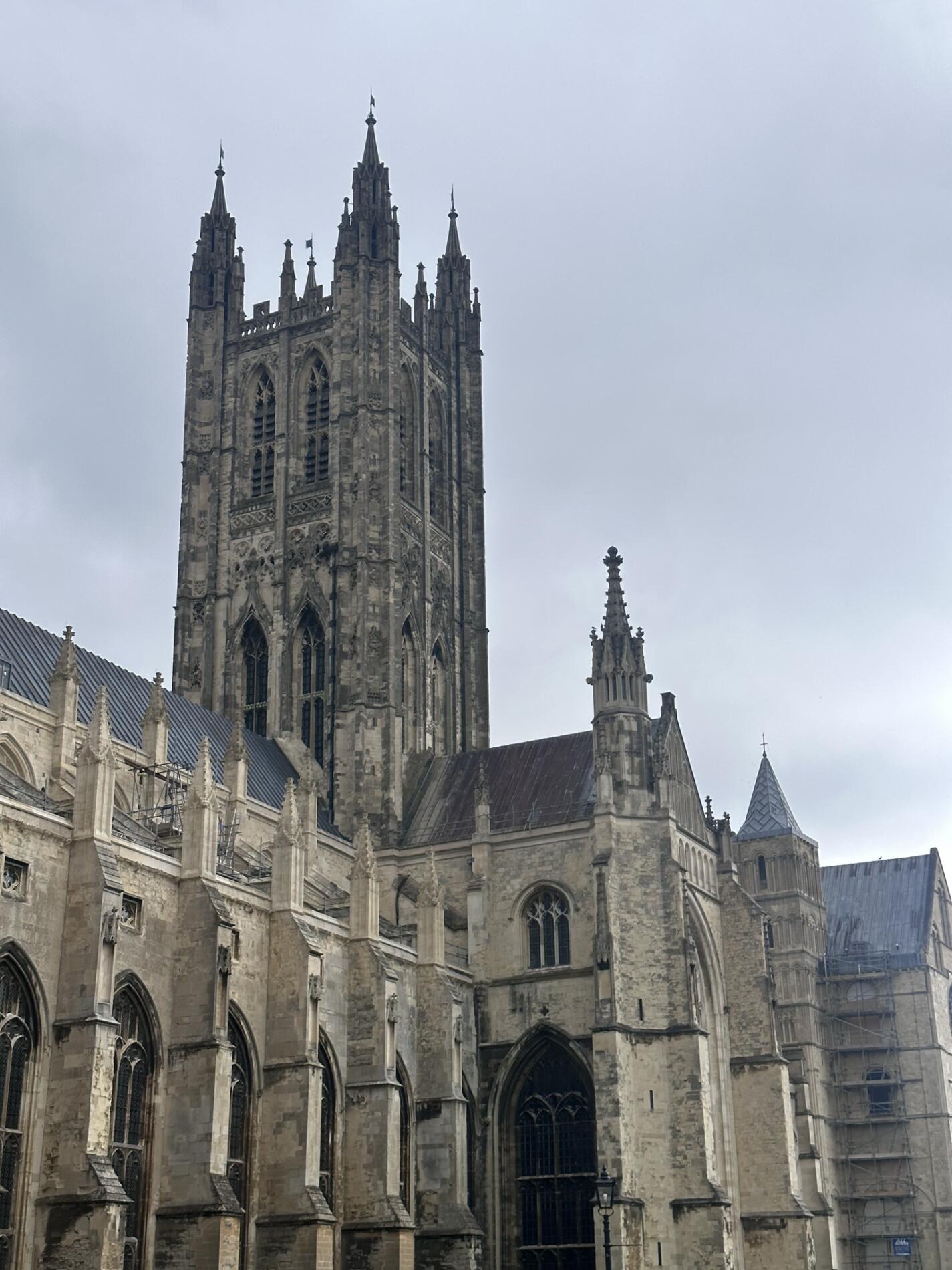
Christopher Marlowe, who it is said to have co-authored Henry V with Shakespeare, was a native of Canterbury. He perished in a pub fight at the age of 29.
Also in Canterbury we saw St. Augustine's Abbey, founded in 597. The Pope sent Augustine to rechristianize England. St. Martin's church is where Bertha, the wife of King Ethelred, is said to have worshipped. If you haven't watched The Last Kingdom, it's a terrific series about the founding of England.
After Canterbury, we visited Walmer Castle, where past wardens of the Cinque Ports lived. It was built in the 16th century as a fortress by Henry VIII.

The Warden is a ceremonial position. A few of the illustrious past wardens were the Duke of Wellington, William Pitt, and the Queen Mother. Currently, the post is vacant.
The most interesting part of the castle were the creatively sculpted ancient Yew hedges.
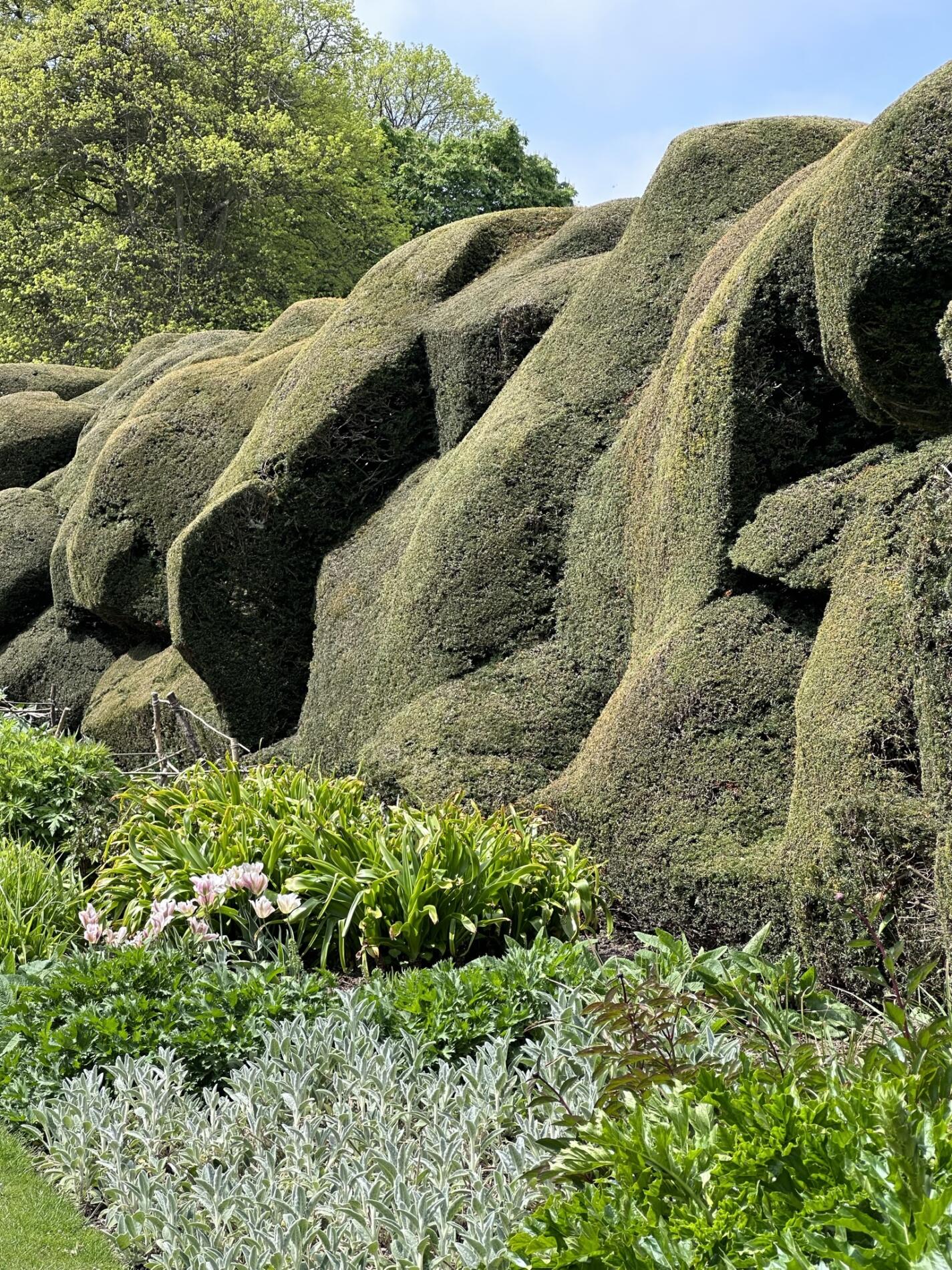
We passed through the Village of Deal on the North Sea with its picturesque beach huts.
Then we passed through The Hamlet of Ham on the way to the Town of Sandwich. Seriously! Lettuce entertain you some more....
FUN FACT: Famous founding father and author of Common Sense, Thomas Paine, came from Sandwich.
Ephesus (Kusadasi), Turkey
- At October 27, 2023
- By Jessica
- In Travel
 0
0
One of antiquity's best-preserved cities, Ephesus offers yet another look into the lives of the ancients. Many of its ruins have endured from the time Ephesus was one of the largest metropolises of the ancient world. Excavations reach back to the 10th century BC, when this city contained one of the Seven Wonders of the Ancient World - the Temple of Artemis.
With a wonderful private tour guide recommended by friends, and glorious weather, we started our day at Ephesus. We visited the towering facade of the Library of Celsus.
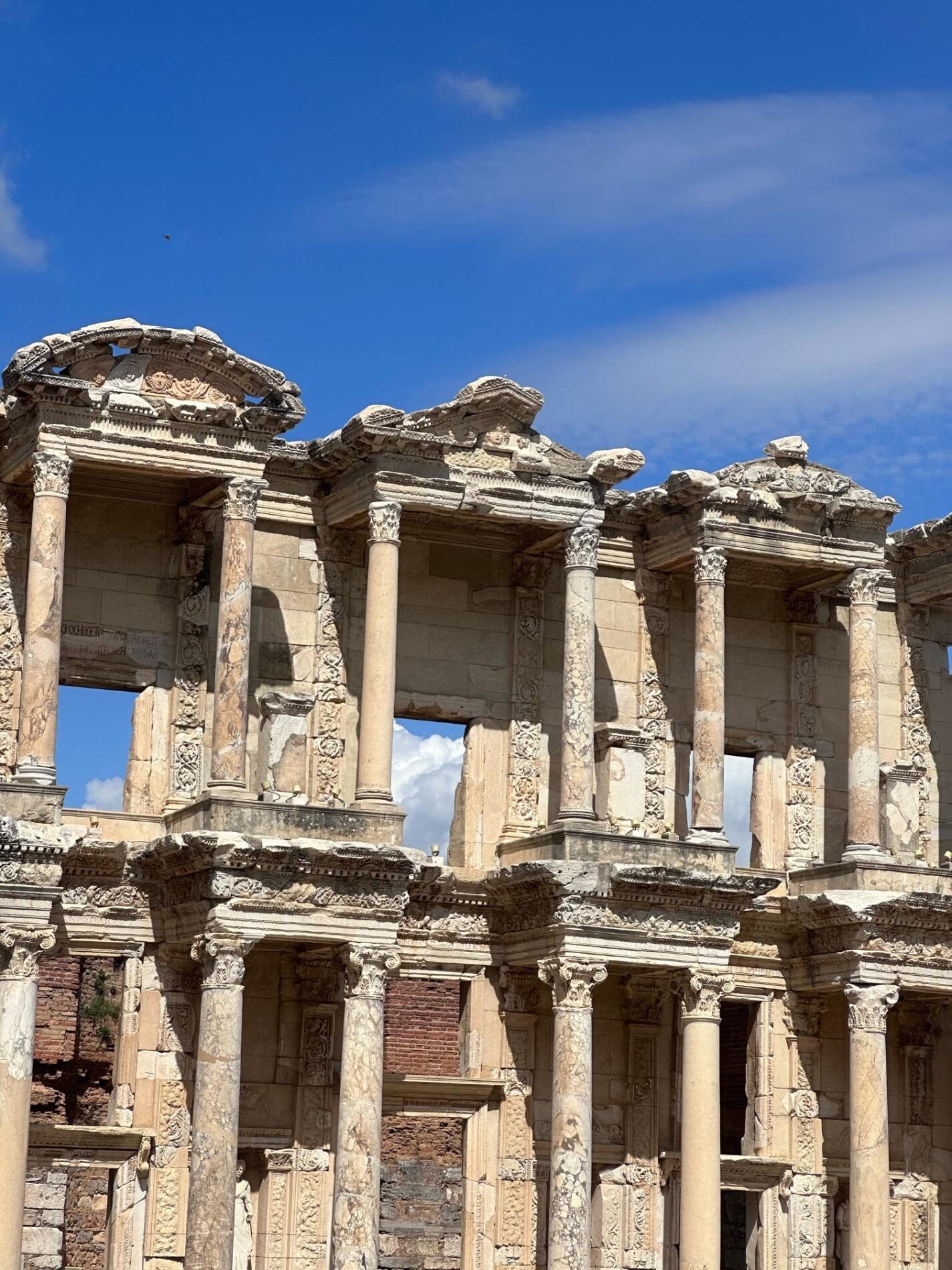
The three faces of Medusa on the top protect the library. Medusa's "evil eyes" are believed to kill evil spirits. Apparently, it didn't work. All the scrolls were burned in the 4th century AD by invading Visigoths. Prior to that, it was the 3rd richest library of Ancient World with 12,000 volumes for 200 years. (The first was in Alexandria, Egypt with 200,000 volumes.)
Then the massive amphitheater - The Conrad of Yesteryear -that once sat 25,000 spectators:
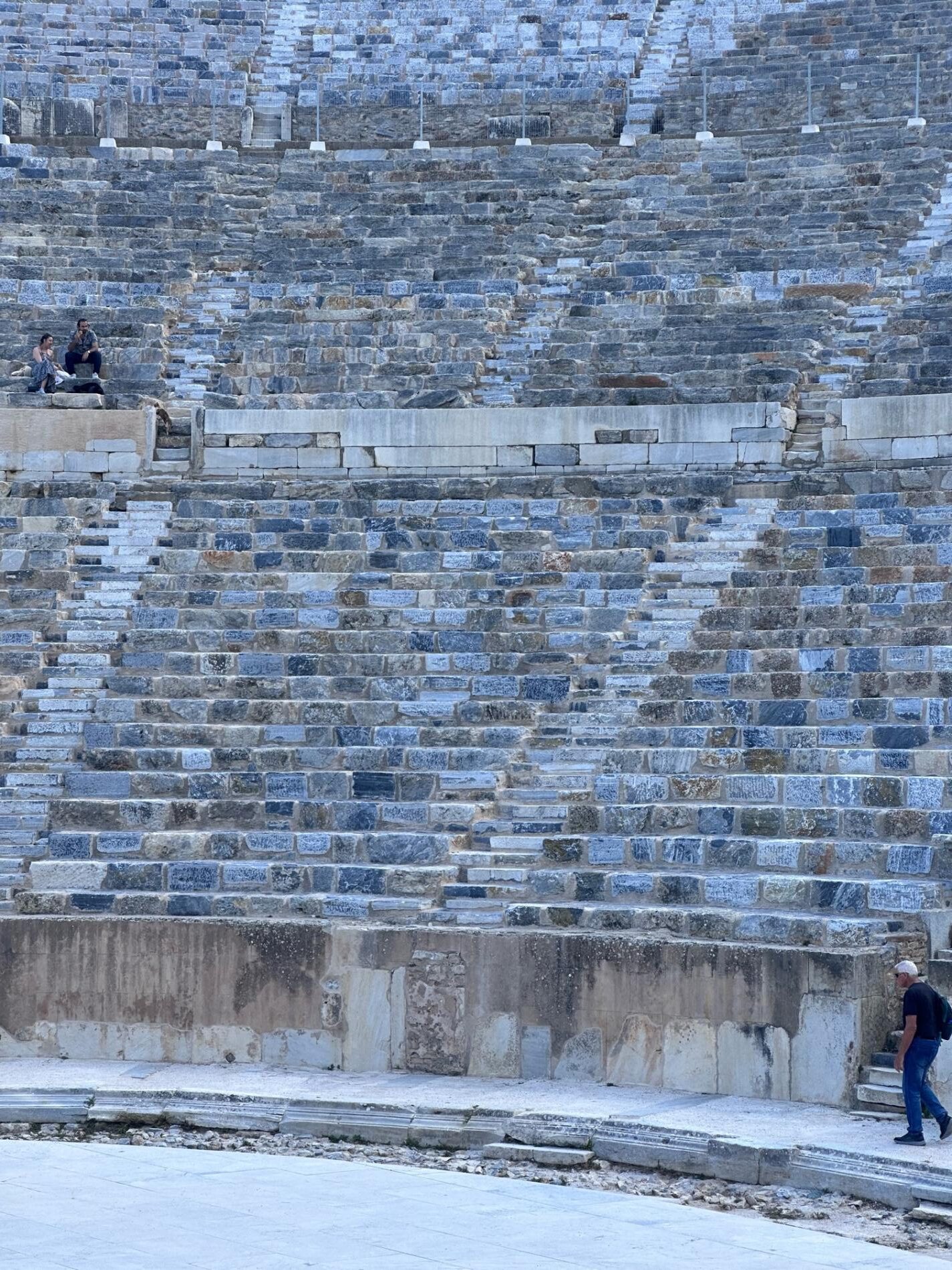
250,000 people lived in Ephesus at the time. Only ten percent could afford tickets for the special events, Greek plays, and concerts. The flat part was the orchestra "pit," behind which was the stage. Recently, concerts starring Sting, Elton John, Yanni, and others have been staged there.
And next recently uncovered private two story residences adorned with frescoes:
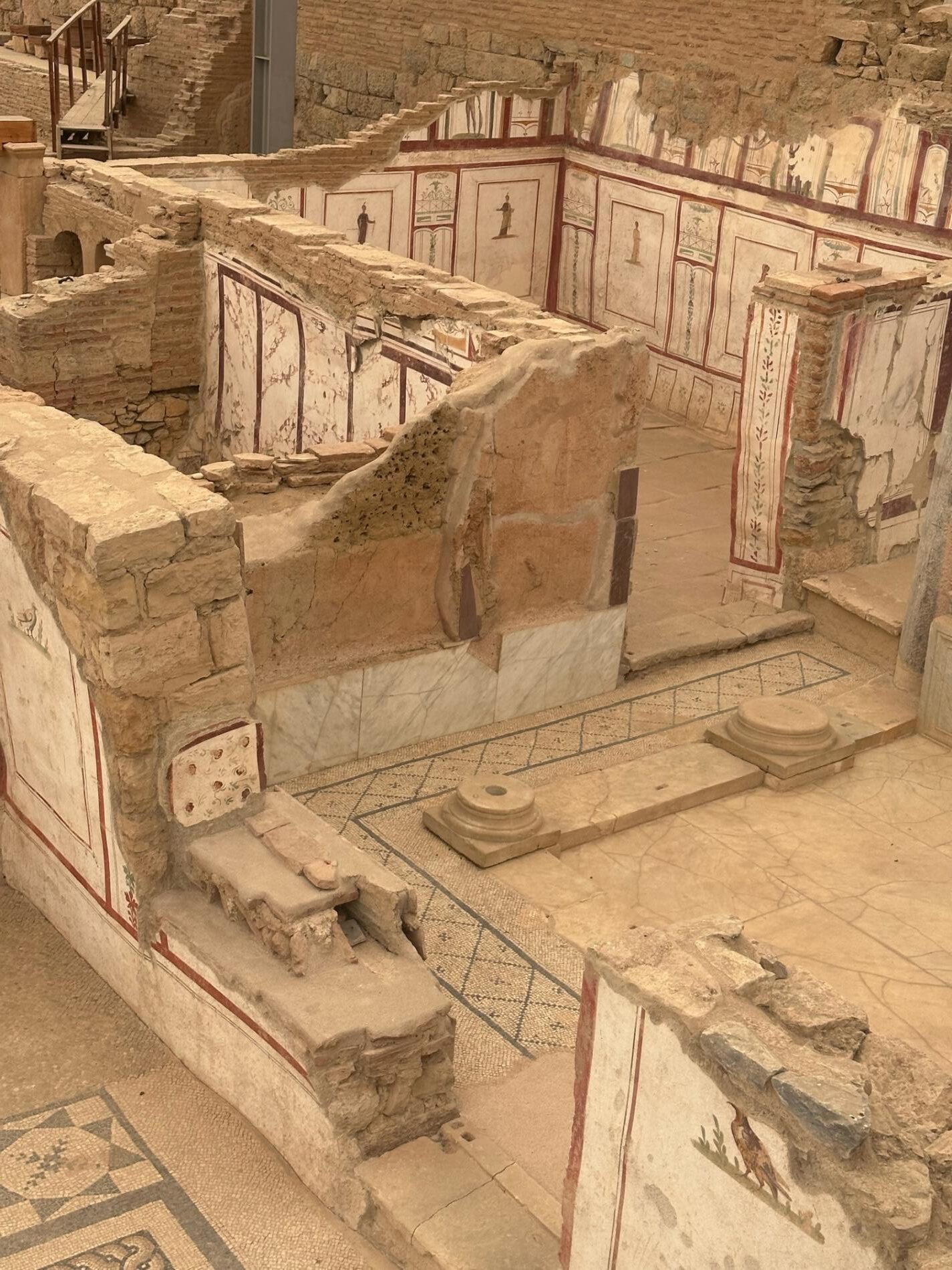
Ephesus also holds an important place in Christianity. Here, St. John is said to have preached and Mary to have lived out her final days in a tiny stone house, although Mary's residency has never been proven.
British engineer John Turtle Wood discover the Temple of Artemis and, with in, Ephesus in 1869 while building the first railroad in Turkey for the Ottoman Empire. Like so many other ancient treasures, it was exported by the British and the Temple of Artemis now resides in the British Museum in London. The Turkish Government is fighting to get it back.
Speaking of the Turkish Government, national elections are on May 14th and the Turks we have spoken to are praying Erdogan gets the boot.
Back to Ephesus....only 1/3 of the site has been excavated. The finds are amazing. What a glimpse into history....again!
There is a clear theme emerging, a procession of Empires that rule the world for while, only to fall and diminish or disappear. The Egyptians, The Greeks, The Romans, The Ottomans, The Brits, with spurts from the Phoenicians, Persians, etc., etc. Are we programmed to self-destruct?
Our guide picked us up at the ship at Kusadasi port at 8:30 AM. En route to Ephesus she explained how the River Meander, the main source of fresh water at the time, brought silt to the area where the Sea had receded four miles creating naturally reclaimed land. Due to global warming the sea levels are expected to rise and cover this developed land with water in the future.
By the way, the River Meander is long and twisty with a slow water flow. It is the origin of our English verb to meander.
Kudasudi has a population of 150K. Seljuk, next to Ephesus, has 30K. The economy does not rely on tourism but on farming. The soil is very fertile from the rich silt deposits left by the River Meander. They grow mulberry trees to feed silk worms for rugs. Seljuk was part of the Silk Road. Chinese monks smuggled cocoons into Turkey and sold them to the Turks. So much for ascetic monks.
The wealthy Seljuk family is where Osman I was from. In 1299, Osman I founded the Ottoman Empire.
Many of you know this but Ertugrul: Resurrection was by far the best television series we have ever watched. It is about the history of the Turkish tribes and how they evolved into the Ottoman Empire. A Must Watch!
Ephesus is a Greco-Roman site. First built by the Greeks but completely destroyed by two earthquakes in 17 AD and 102 AD, respectively, it was completely rebuilt by the conquering Romans in 129 BC until the 3rd Century AD.
The city that exists today, with a few exceptions, is all Roman ruins. Classic Roman arches, standing solid thanks to gravity alone, abound.
Roman baths, both common for the social life of men only, and in the home for women, relied on clay pipes for running and heating water.
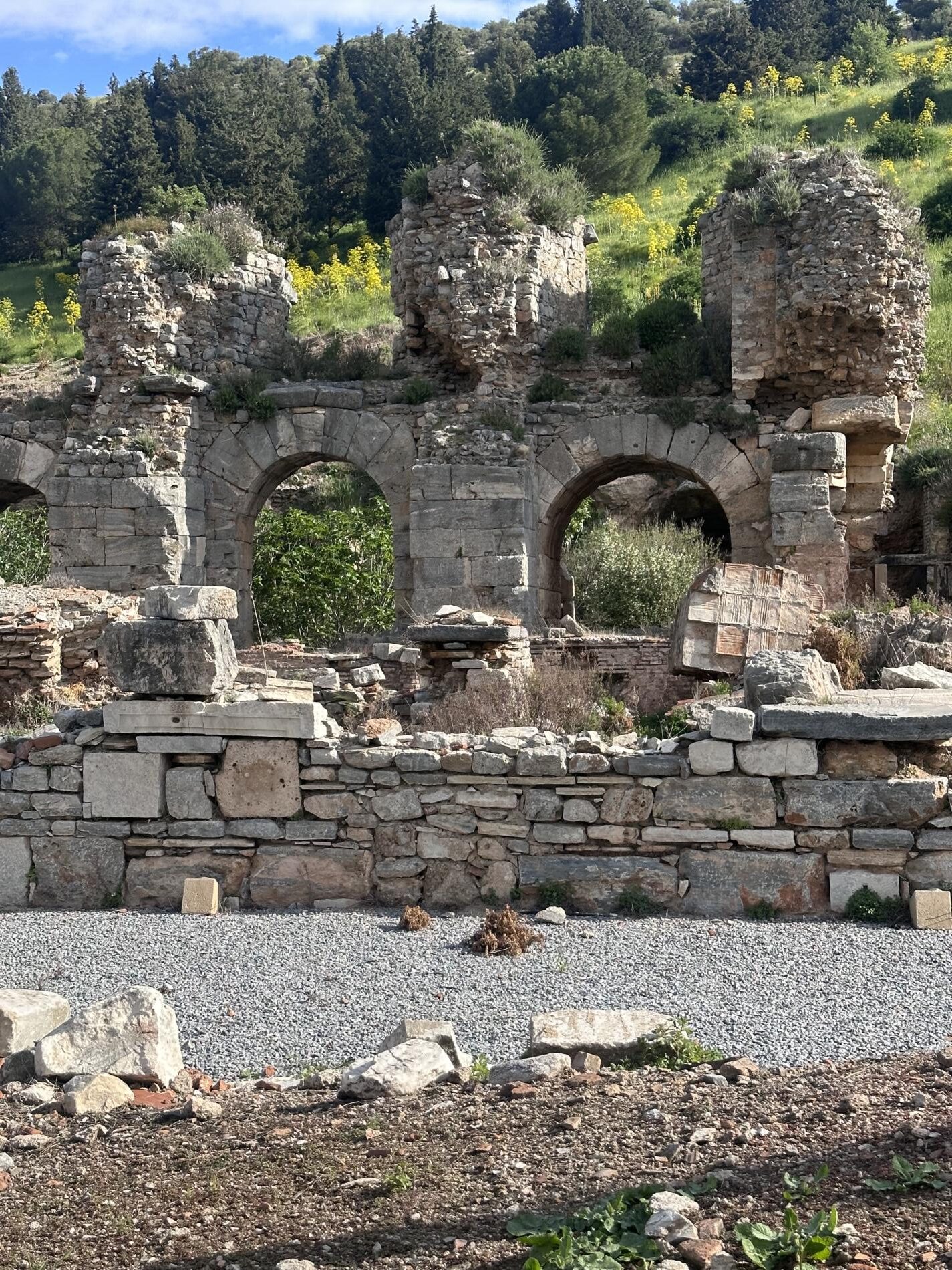
The public baths were comprised of three rooms:
The Tepidarium or warm section; the Caldarium or hot steam; and, the Frigidarium or cold section Tepid and frigid are both English words derived from Latin and the latter is the root for refrigerator.
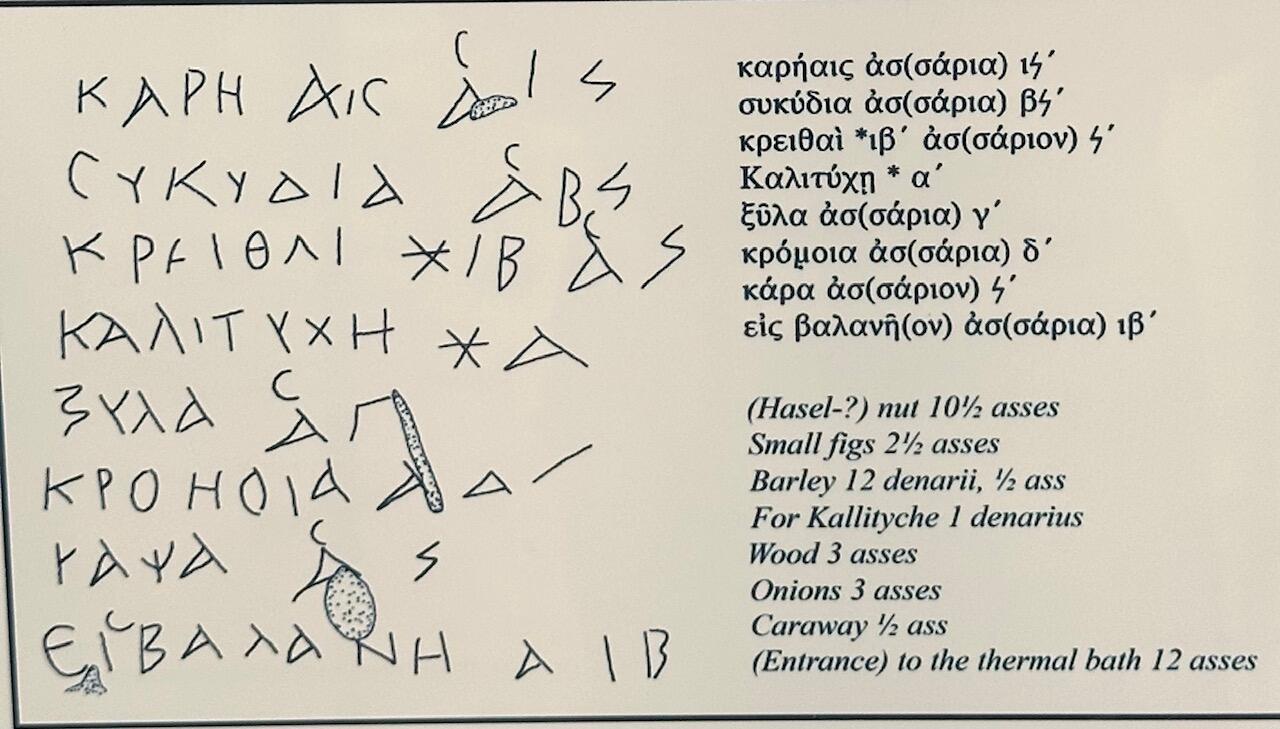
In the 6th century, the Persians invaded and destroyed everything in their path. Then sickness, floods, earthquakes, and fire, finished the town off.
At the end of the 7th Century AD 80 percent of the population died from Malaria. Ephesus was abandoned. Later earthquakes destroyed the Roman constructions. Silt from the River Meander covered everything until the ruins were discovered by Wood in 1869.
The City Hall sits next to an amphitheater for meetings of Parliament (originally called the Bouleuterion or Place of the Bull = place of power.) Place of the Bull as a seat of government might have a different connotation now.
There were 450 senators. Ephesus was appointed the Roman capital for Asia Minor by Caesar Augustus in 27BC.
All of Ephesus was built by Egyptian slave labor.
Greek Gods and Goddeses were adopted by the Romans who gave them Latin names.
Hestia = Vesta
Artemis = Diana
Vestal virgins were nuns who protected the Temple of Hestia/Vesta.
There was a first century AD hospital with treatment rooms, needles, tweezers, and an inscription over its portal: "Death Cannot Enter."
And here is Fortuna, whose image has been made ubiquitous by Starbucks.
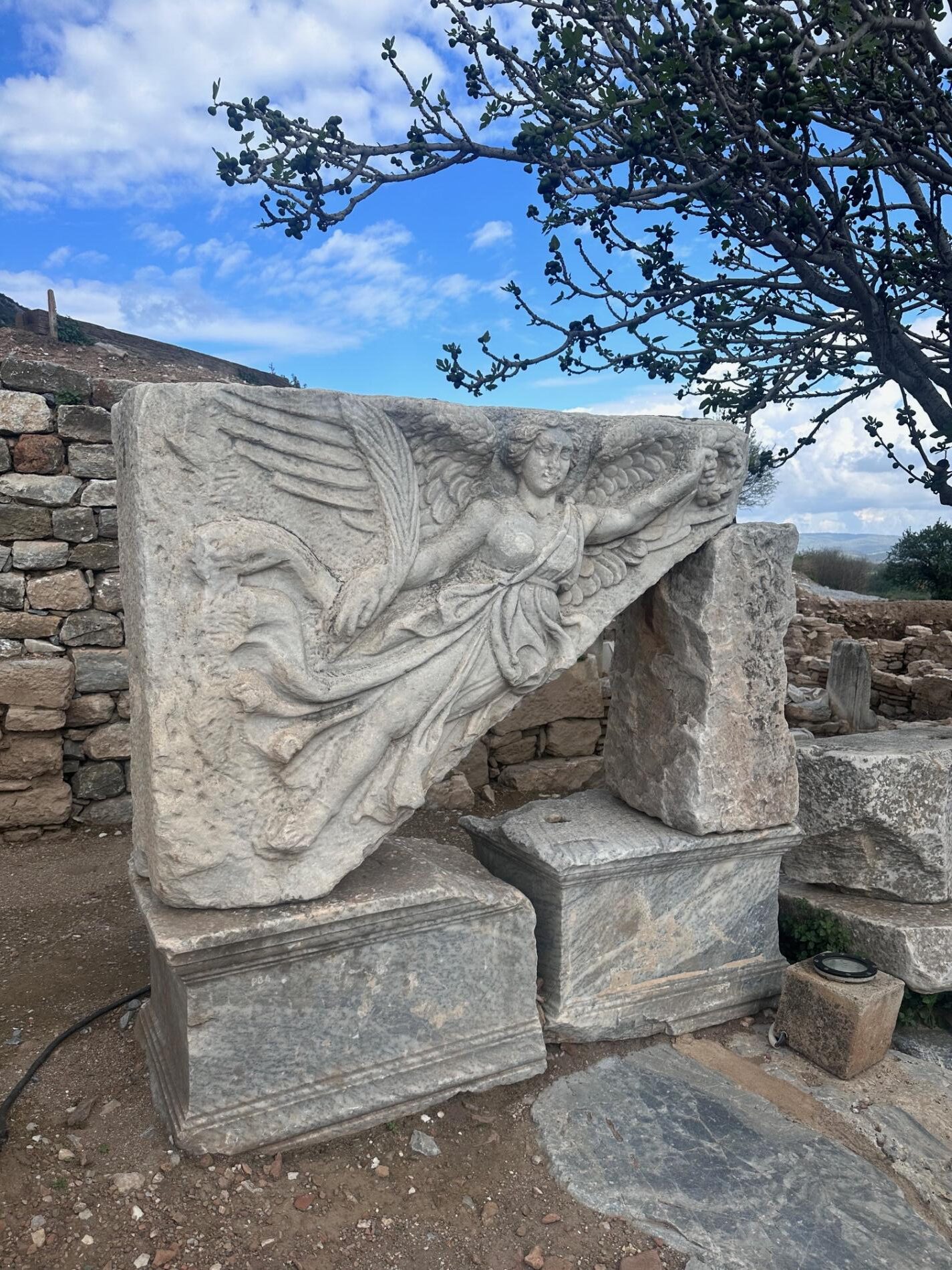
We bought out half the figs (for Eberhard) and halva (for Jessica) in Ephesus. Then visited a carpet factory for making those famous Turkish carpets. (Don't worry - we didn't buy any.)
Only Turkish carpets have double knots. A wool rug takes 4 months to weave. If silk 1.5 years. 420 knots per sq inch. Silk is 2nd strongest natural fiber in the world after spider webs. A silk caterpillar produces one mile of silk in two days to make his cocoon. 1 mile per cocoon.
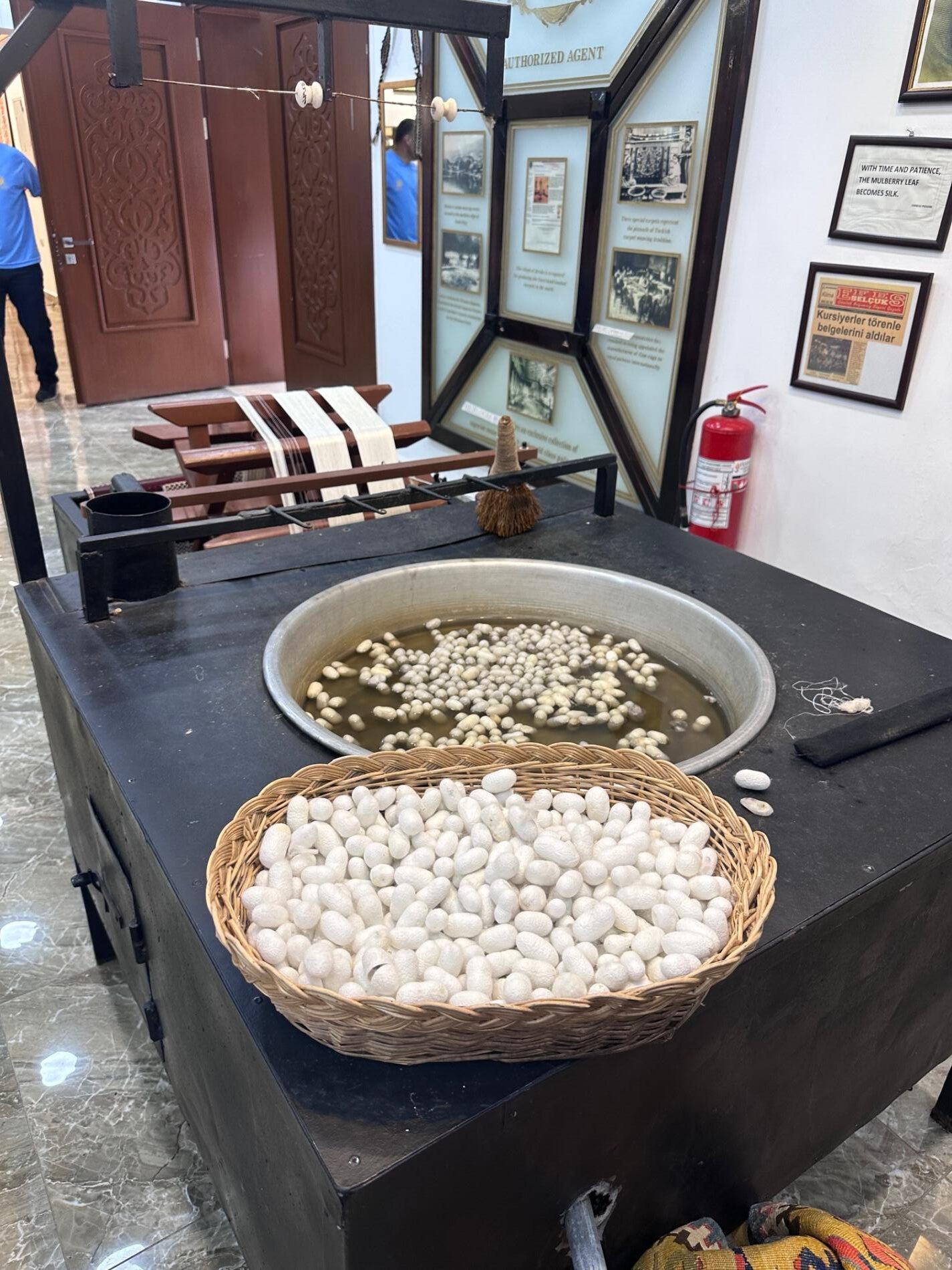
Silk was invented 3000 years ago in China and produced since the 5th century in Turkey.
We ate a fabulous late lunch with local wine at the Seven Sages Winery. We ate like domuz = pigs in Turkish.


